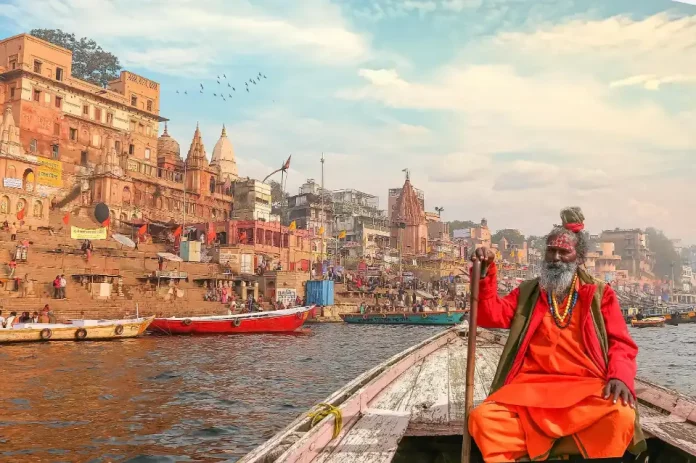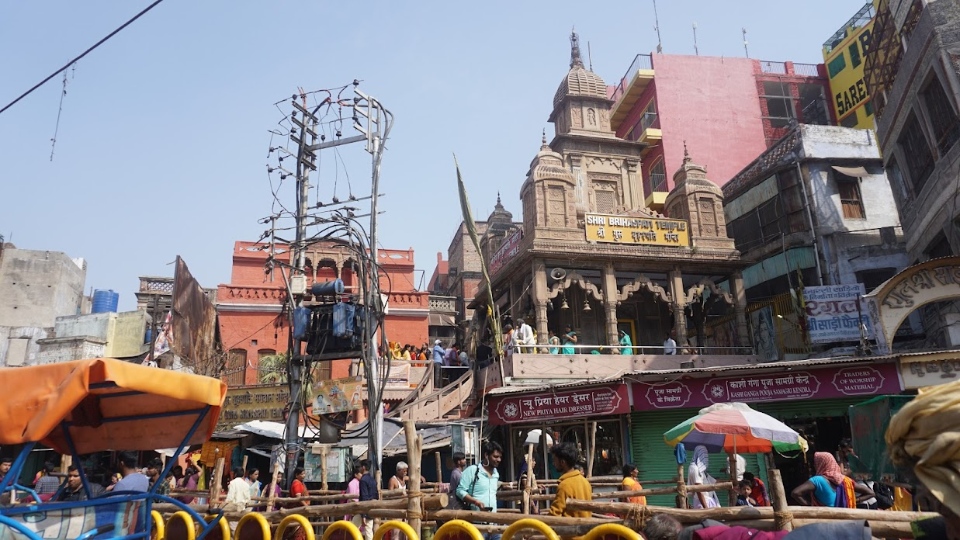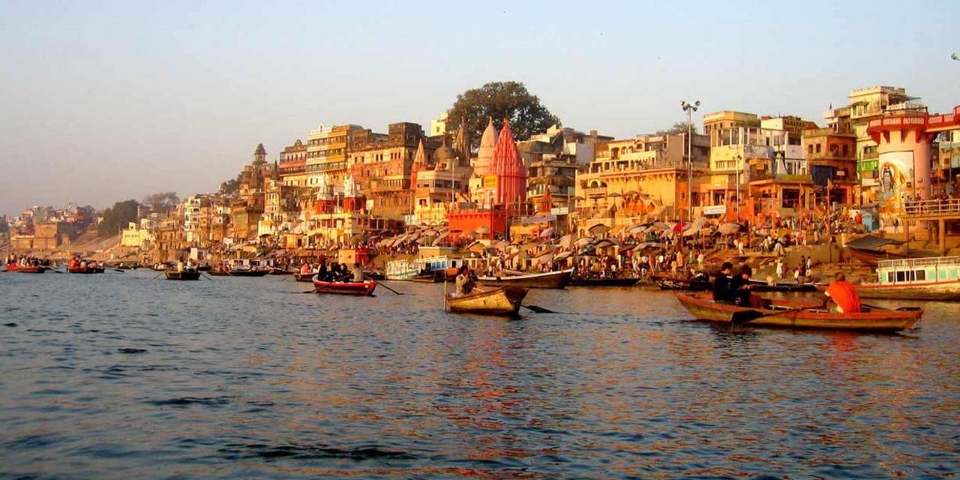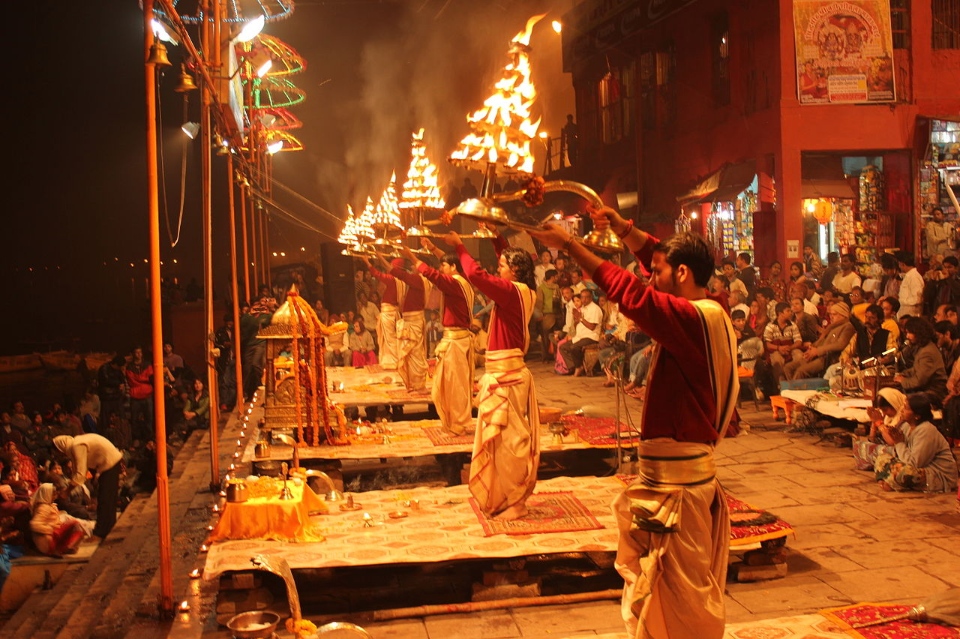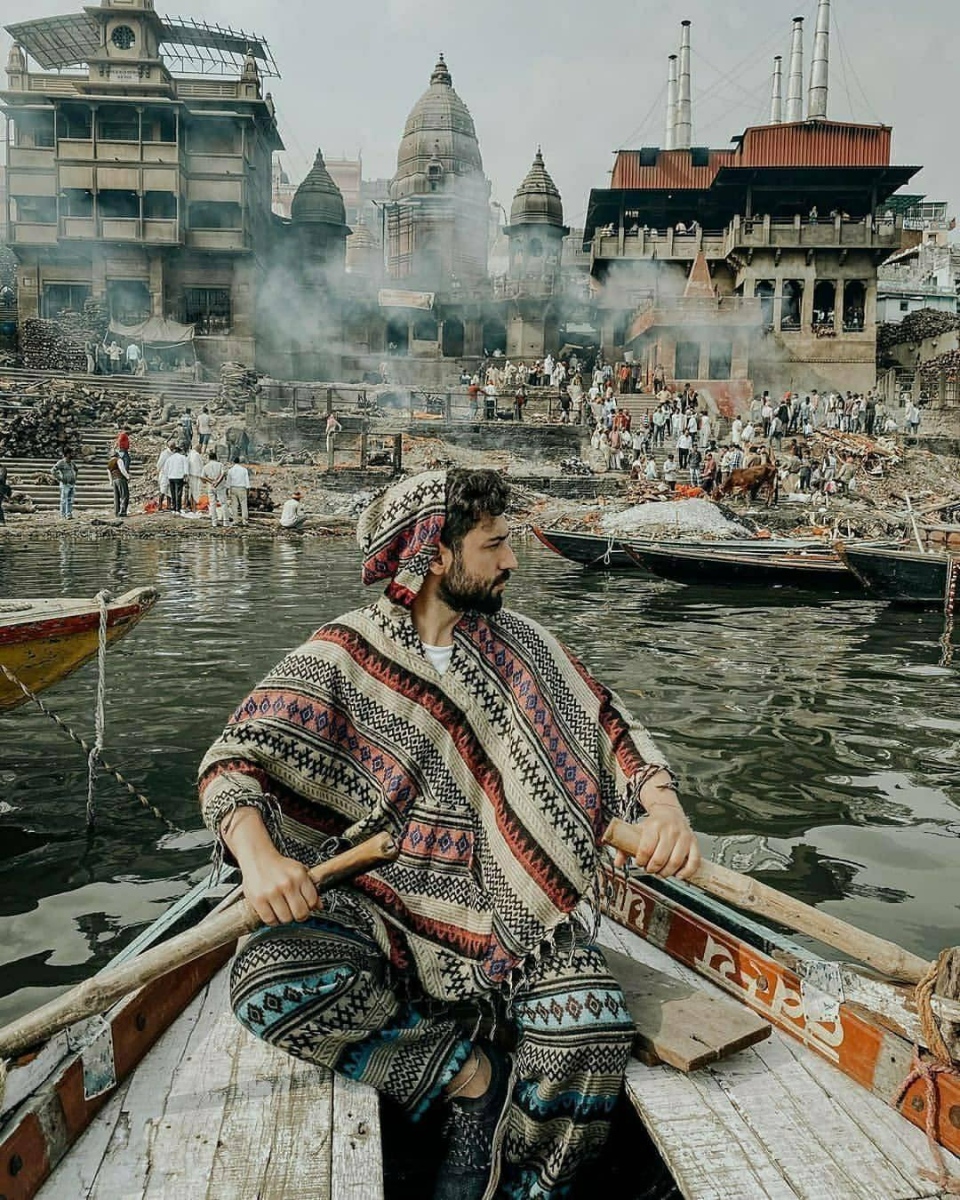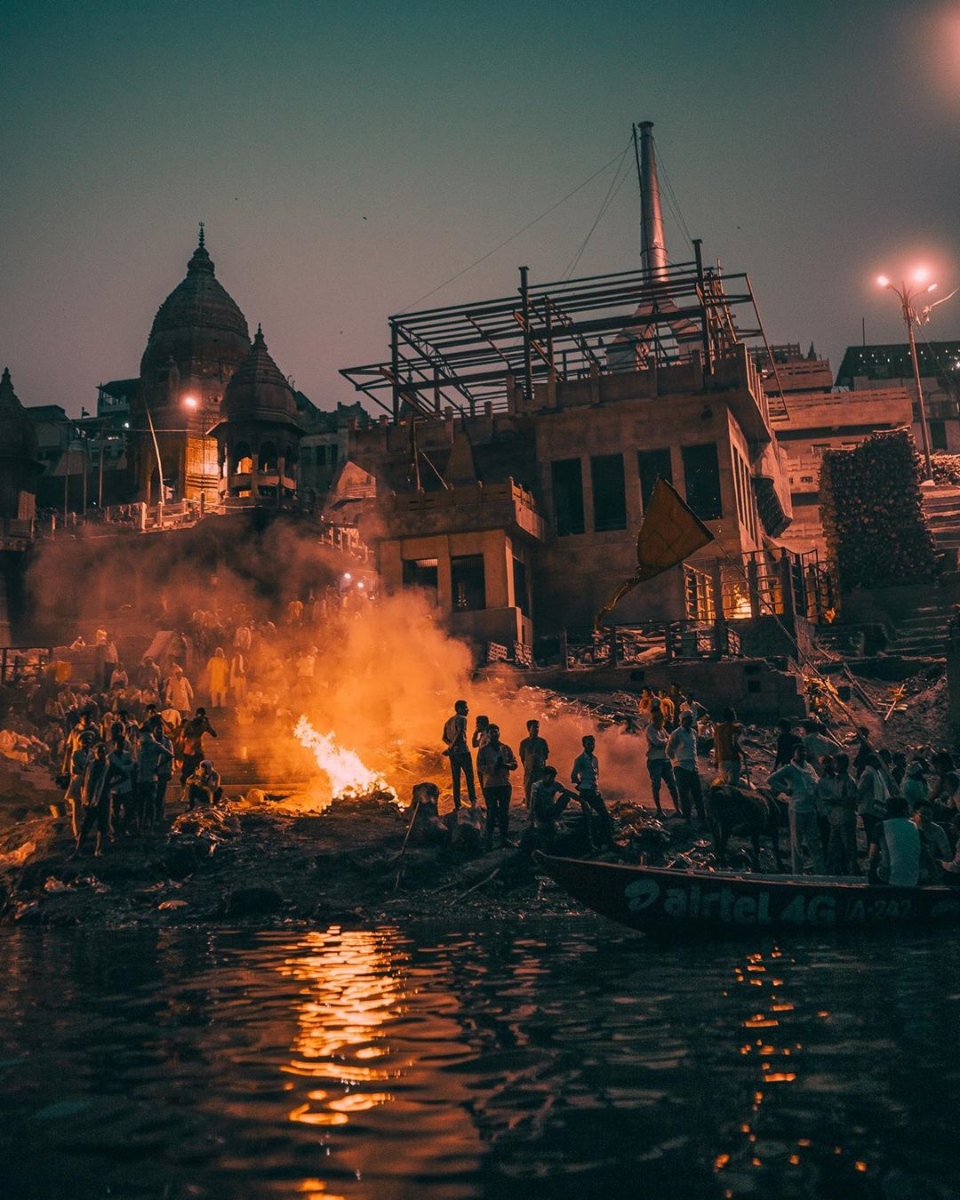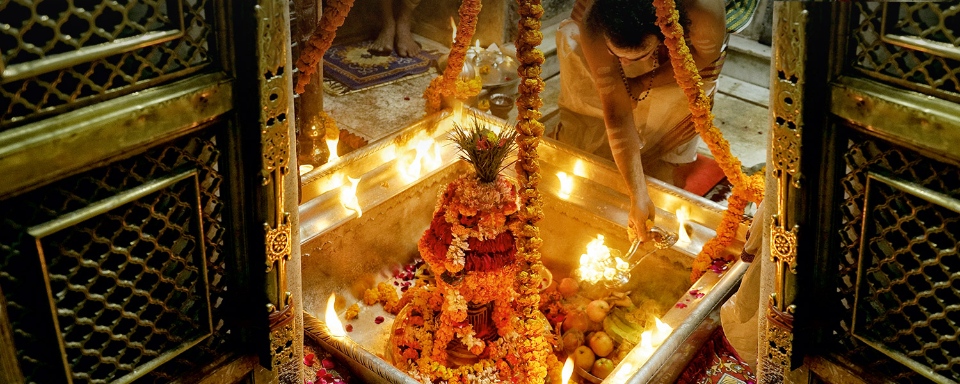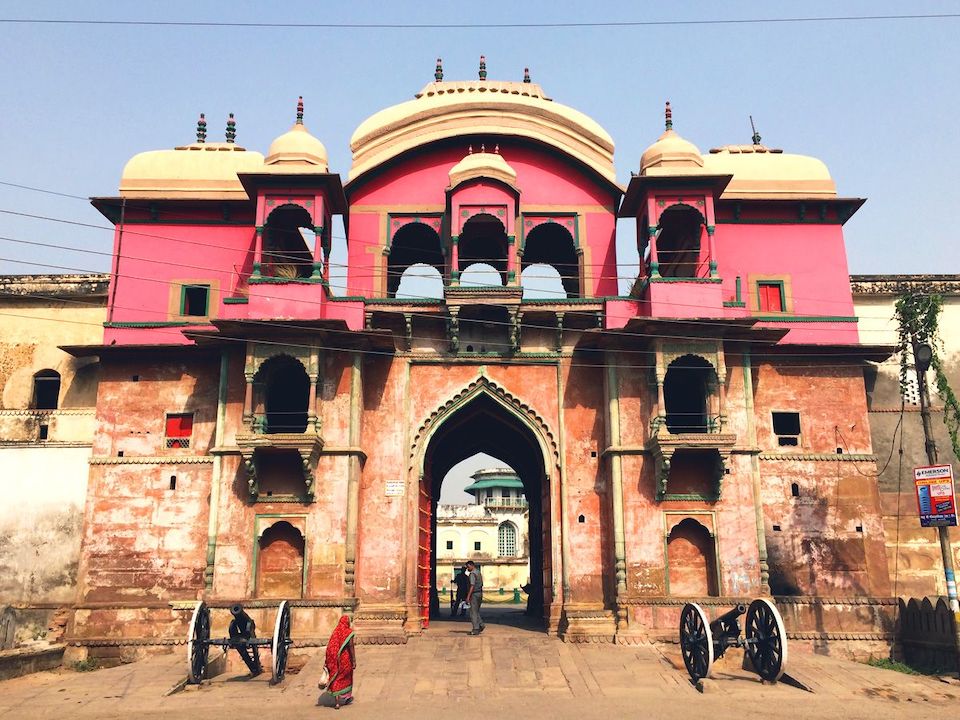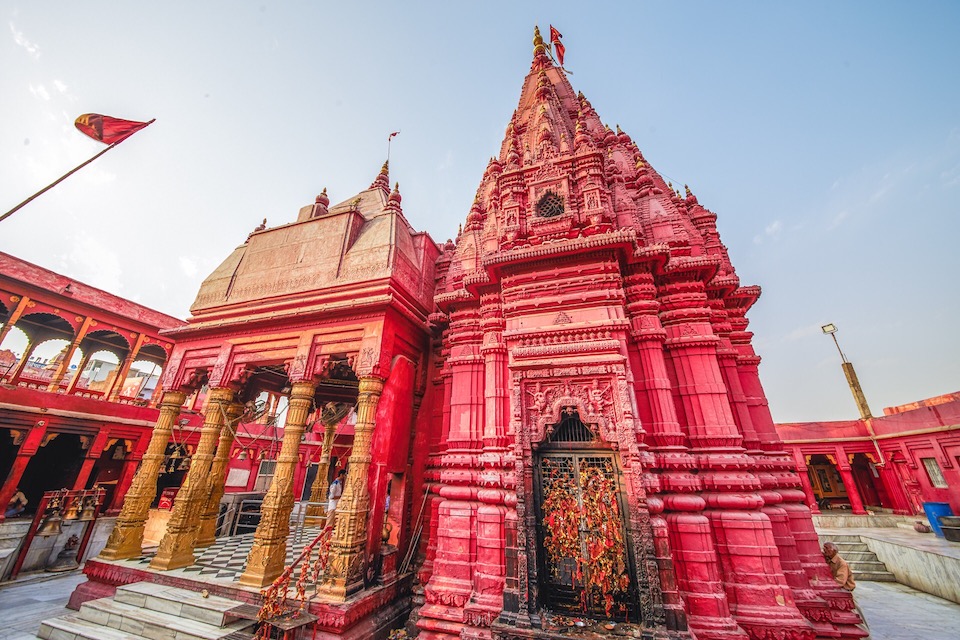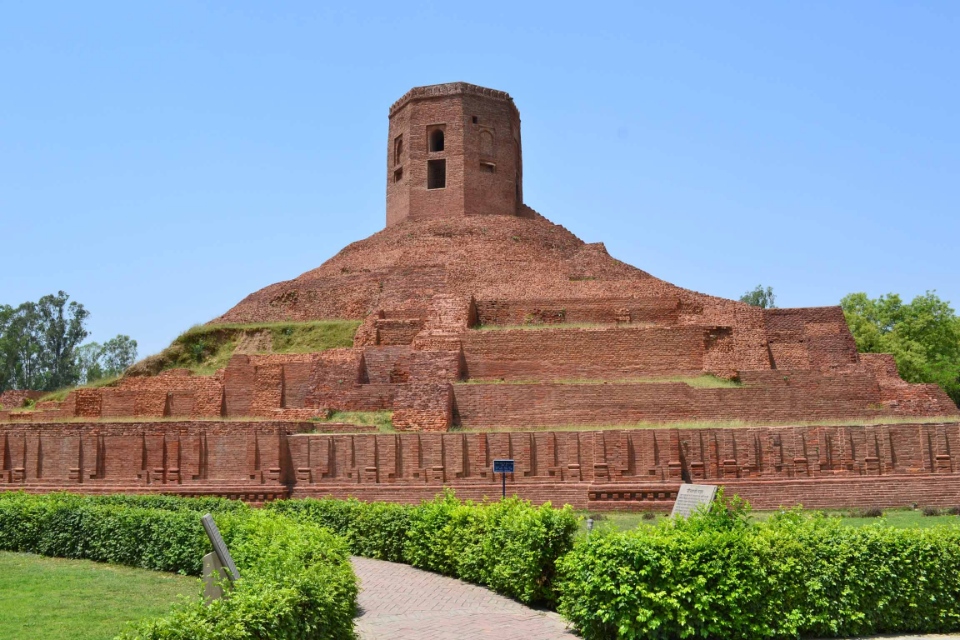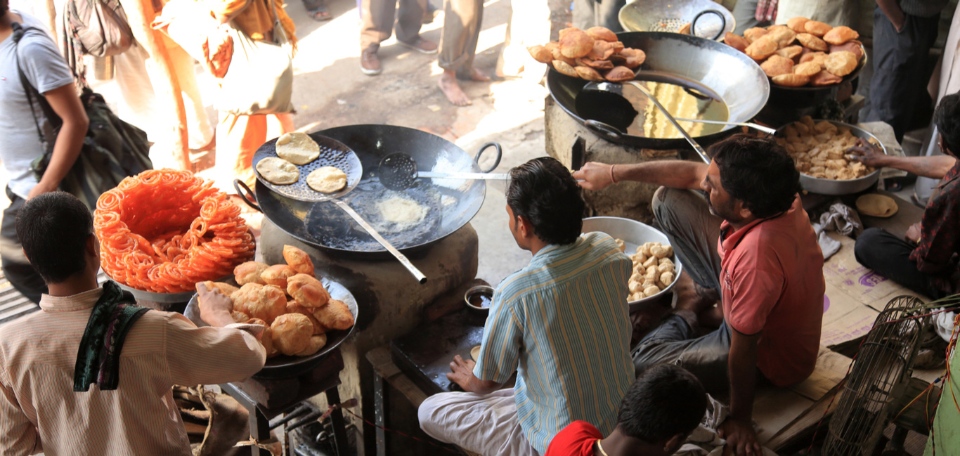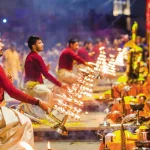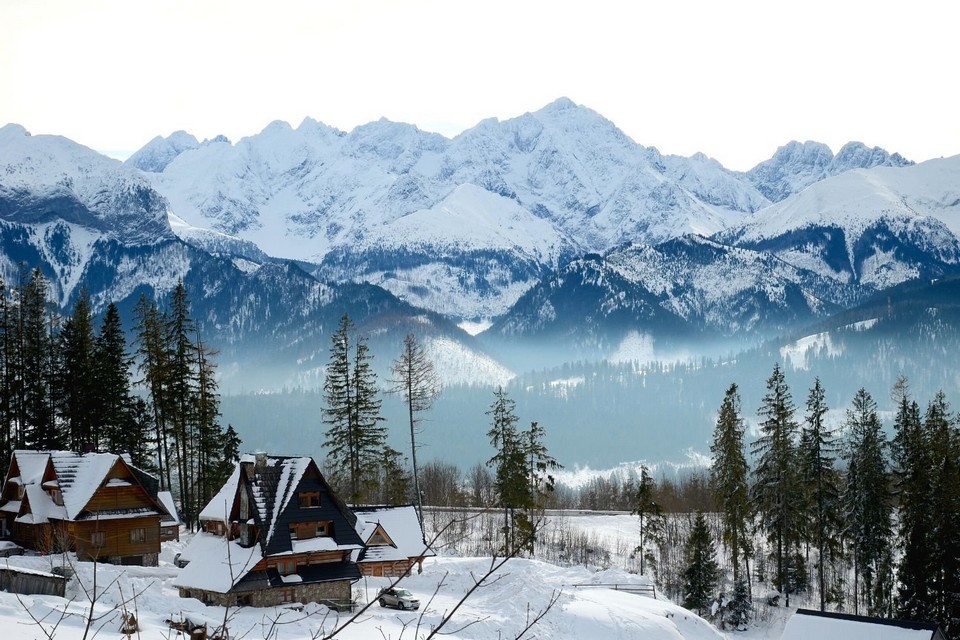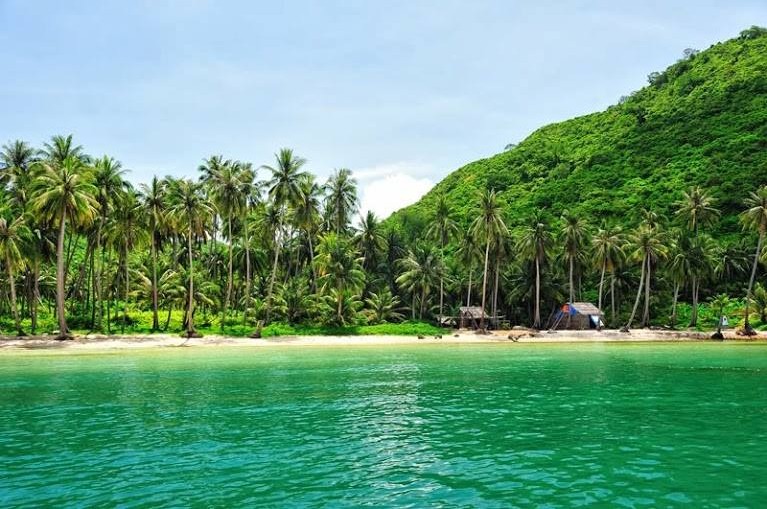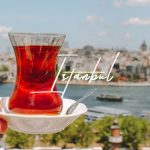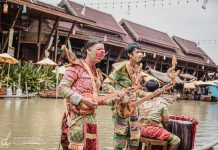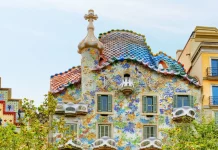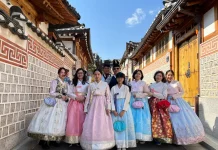Do you know a place in India that writer Mark Twain once said is more ancient than history, tradition, and legend? Where still preserve intact the rituals, customs and sacred culture of the Indians? What place is sacred to both Hindus and Buddhists? That is the city of Varanasi in the state of Uttar Pradesh. So, is Varanasi worth visiting, how to visit Varanasi, what to do in Varanasi and how to plan a budget trip to Varanasi for the first-time perfectly? Let’s check out our Varanasi travel blog (Varanasi blog) with the fullest Varanasi travel guide (guide to Varanasi, Varanasi tourist guide, Varanasi city guide, Varanasi guide) from how to get to Varanasi, best places to visit, best time to come, what to eat as well as top things to do in Varanasi to help you maximize your trip as follows!
- Where to go & what to do in Varanasi? — 15+ places to visit & best things to do in Varanasi
- What to buy in India? — 29+ best gifts from India & best things to buy in India
- Leh Ladakh bike trip itinerary — How to spend 6 days in Ladakh by motorbike?
- Leh Ladakh bike trip blog — Ladakh bike trip guide & tips for first-timers
- Ladakh trip cost per person from Delhi — How much does Ladakh trip by bike cost?
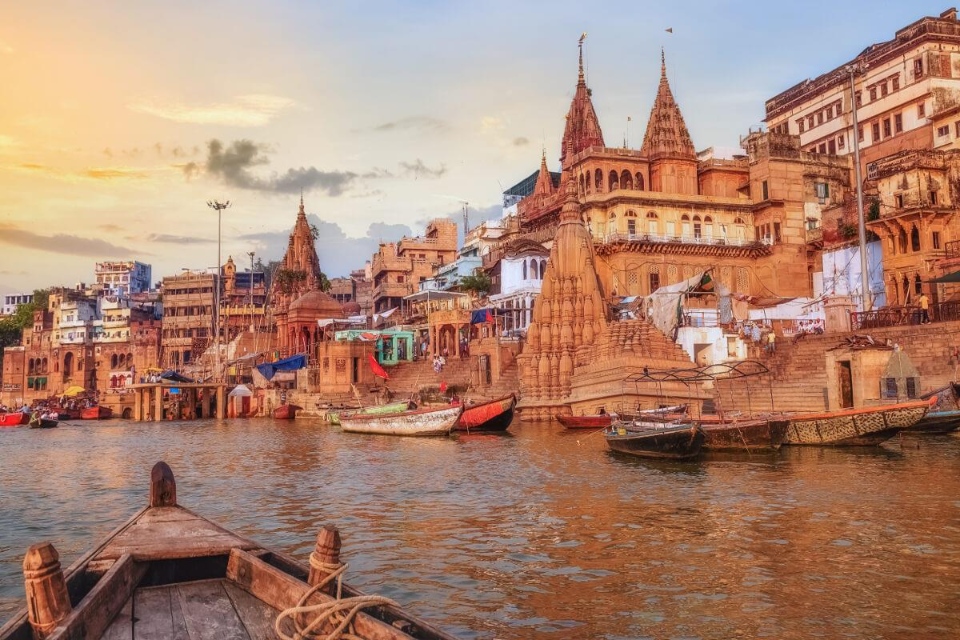
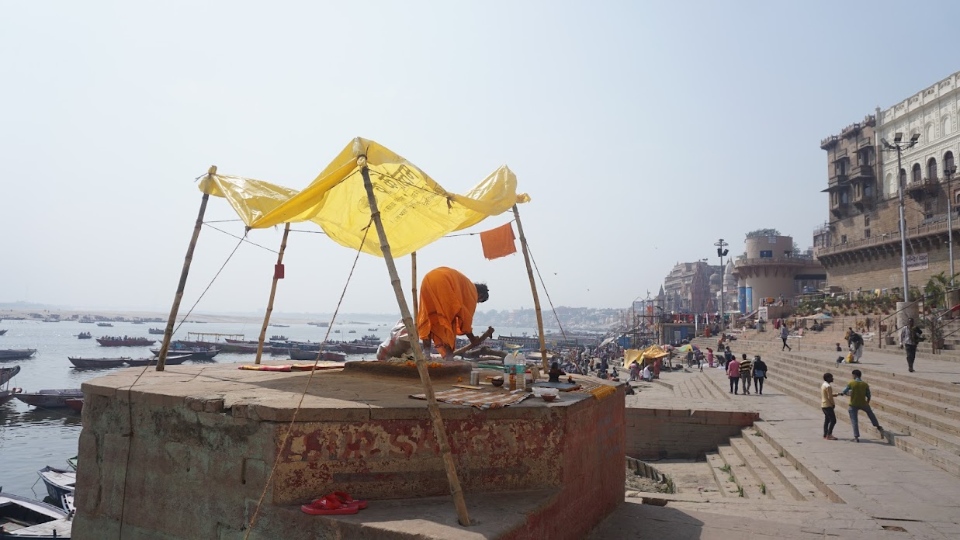
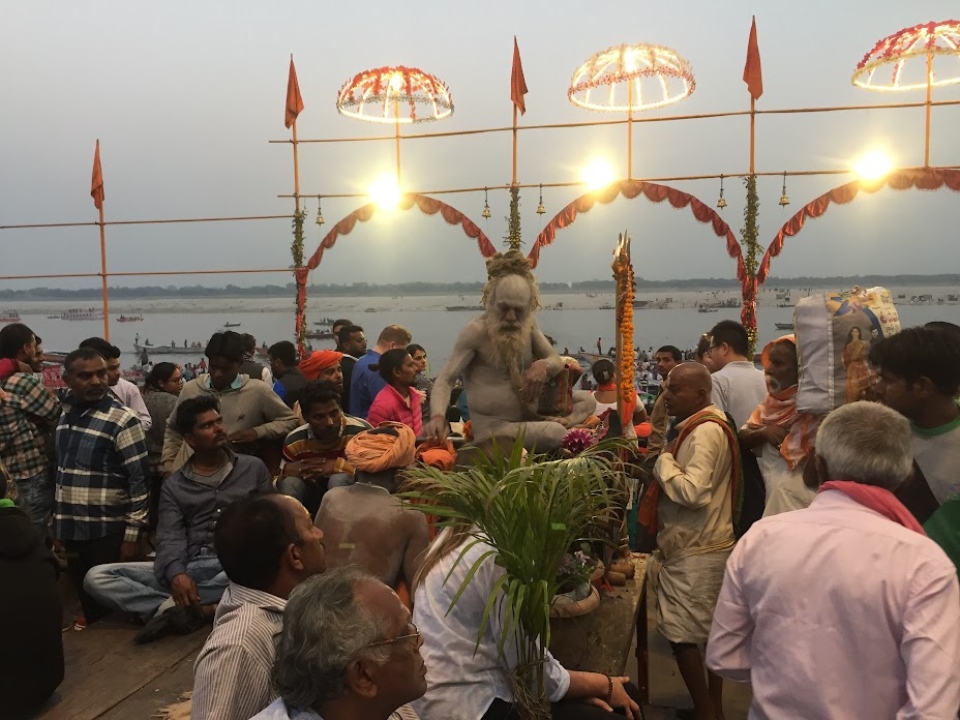
Located on the banks of the legendary Ganges River, this holy city appears with splendid, mysterious beauty but also very peaceful and friendly. This is also the place where you can learn more about the origins of thousands of years of culture in this incredible country of India.
Vārāṇasī, also known as Benares, Banaras, or Benaras, or Kashi or Kasi, is a sacred city and center for thousands of years of Hinduism located on the banks of the Ganges River in the Indian state of Uttar Pradesh.
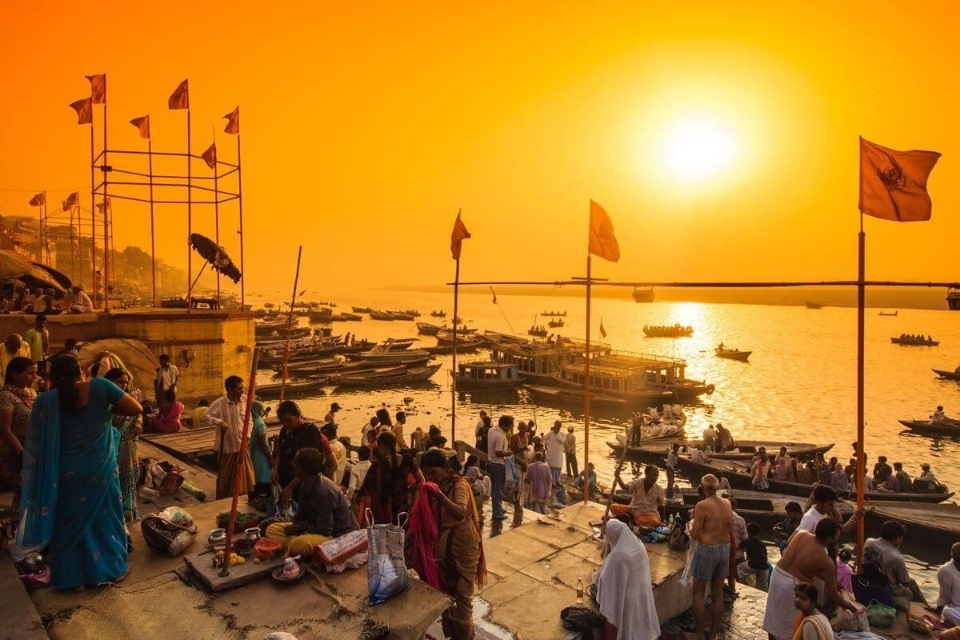
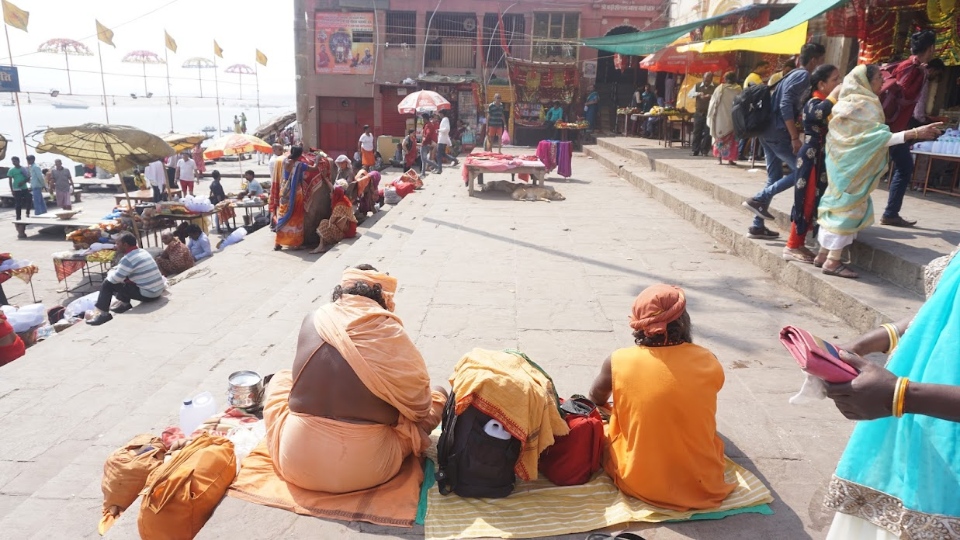
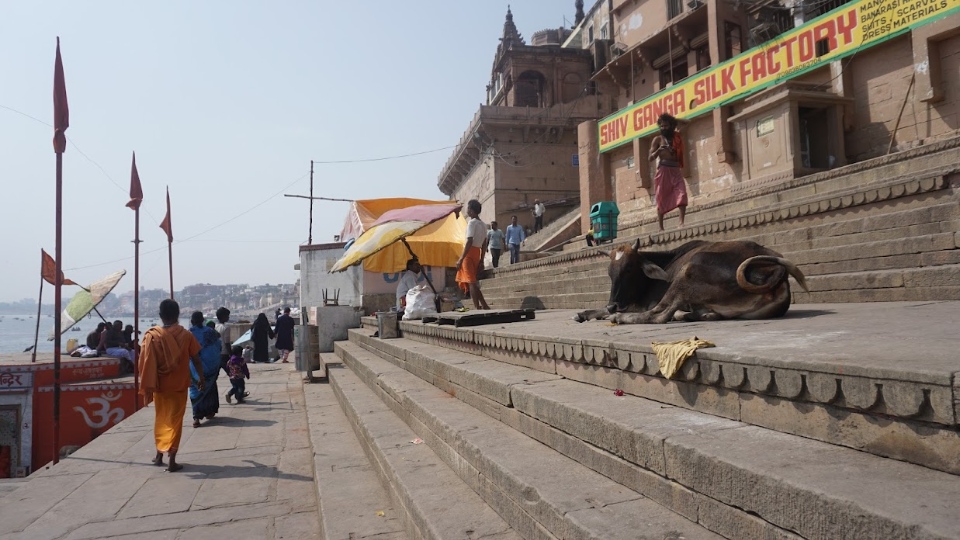
The ancient city of Varanasi is always the boldest and most impressive feature, because that ancient city is compared to more ancient than history, where the cremation fire by the sacred Ganges River from more than 3,500 years ago has not been extinguished, where the rituals of Hindus has been taking place regularly every day for thousands of years and has not changed. The new day in the ancient city begins with the ceremony to welcome the sun god (Surya) rising on the east bank of the Ganges River, and ends with the ceremony of worshiping the fire god (Aarti) at Dashashwamedh Ghat.
And take a boat ride on the Ganges River to learn about the rituals, customs, culture… of the Indians or just to watch the sunrise here… will also be a memorable thing for you when visiting India!
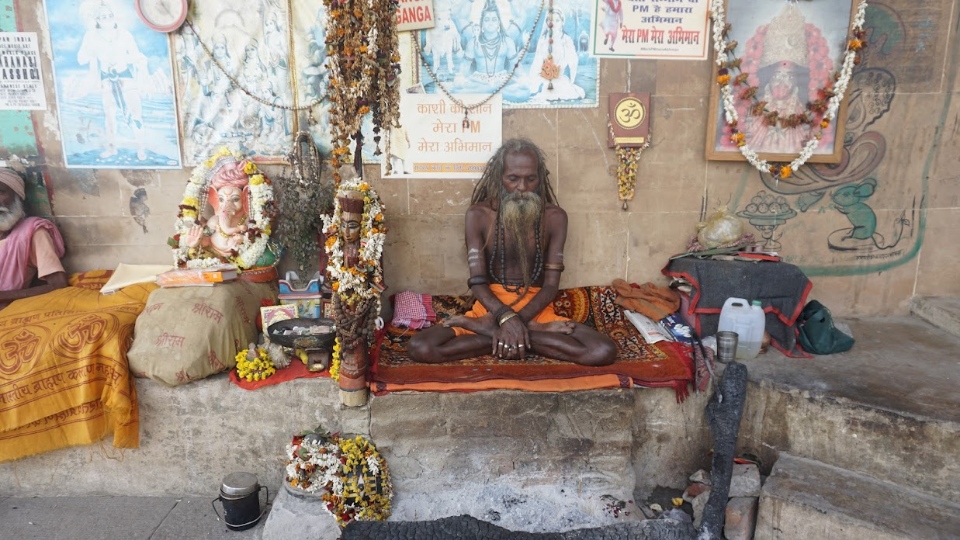
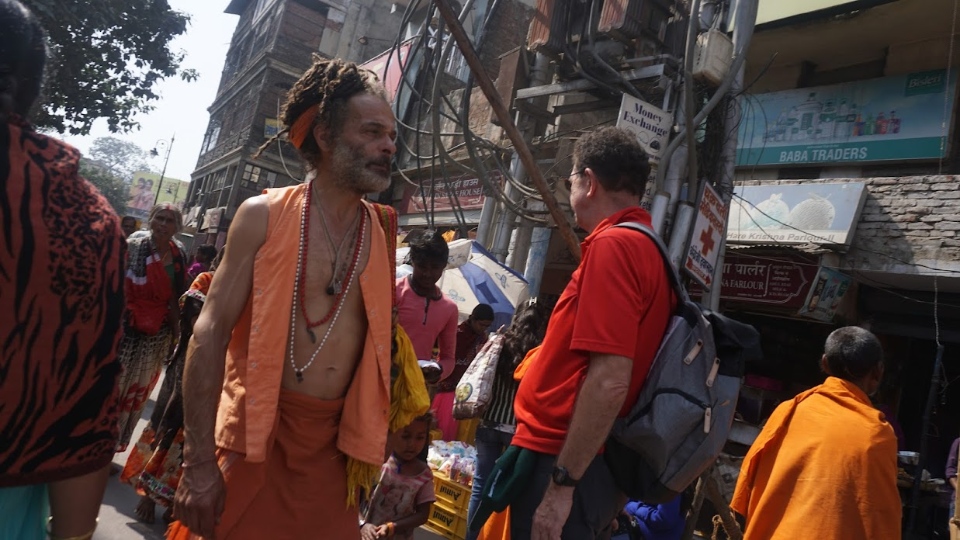

It is no coincidence that Varanasi is described as the “the India of your imagination”. Everyone wears traditional clothes, orange and yellow everywhere. People go to the river to pray at any hour of the day. They have bathed in gurgling streams for many years as a way of purifying their bodies.
Overview of Varanasi (#varanasi travel blog)
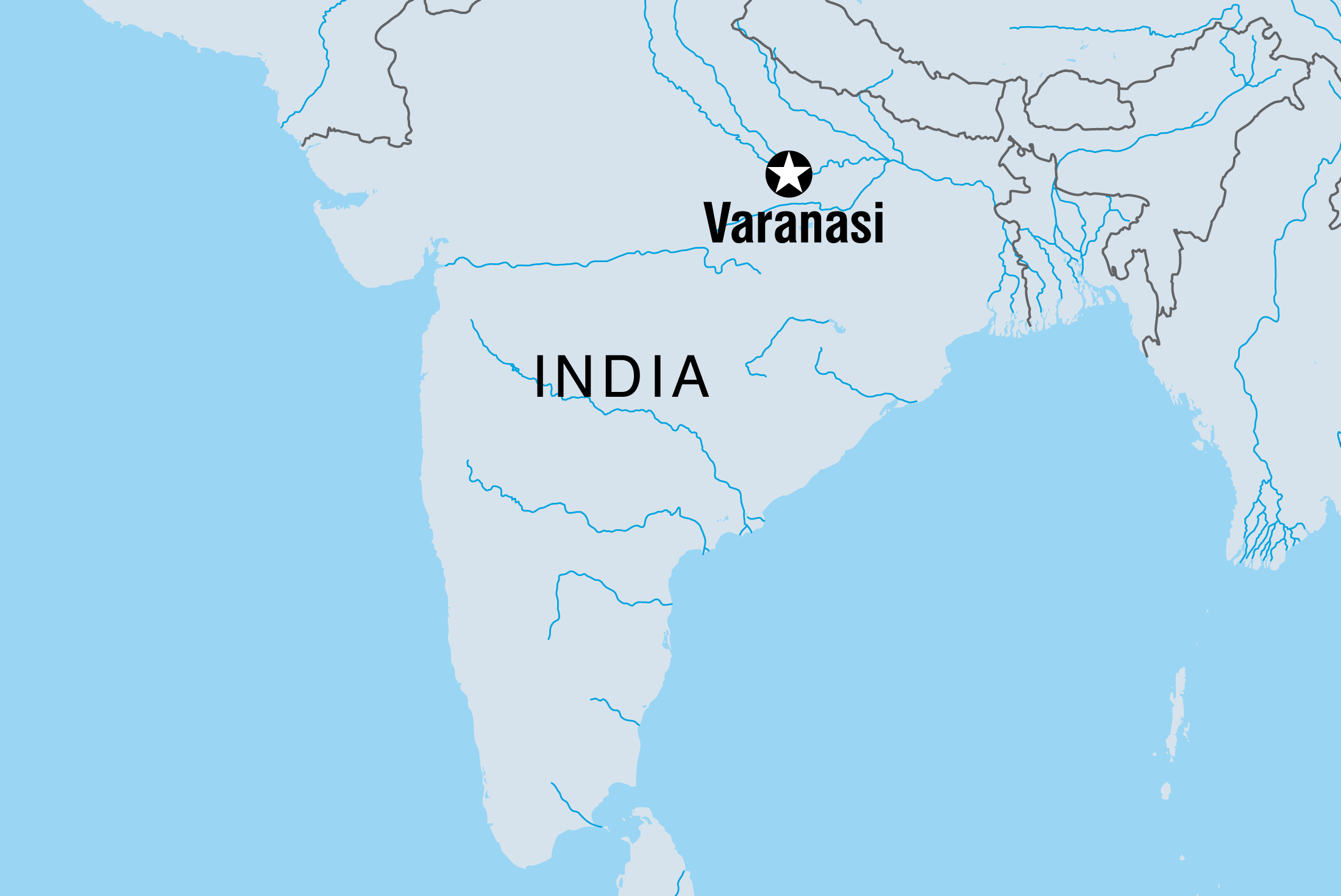
Varanasi is a city in the northern Indian state of Uttar Pradesh dating back to the 11th century B.C. Considered the spiritual capital of India, the city attracts Hindu pilgrims who bathe in the sacred waters of the Ganges River and perform funeral rites. Along the city’s winding streets are some 2,000 temples, including Kashi Vishwanath, the “Golden Temple” dedicated to the Hindu god of Shiva.
The city of Varanasi is one of the holiest sites of the Hindu faith, where locals believe that souls will be sent straight to heaven, to the abode of the gods. Some of the hotels here exist only to accommodate elderly people awaiting impending death.
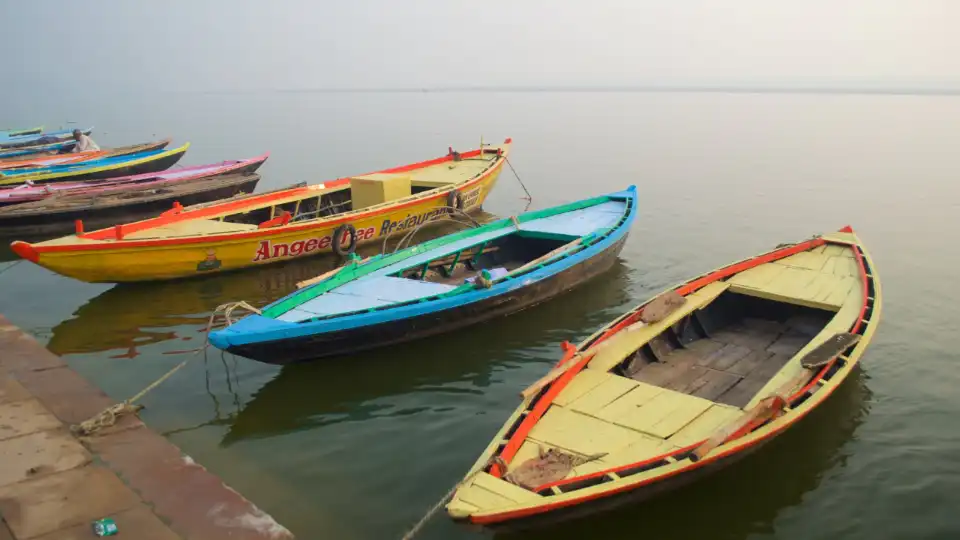
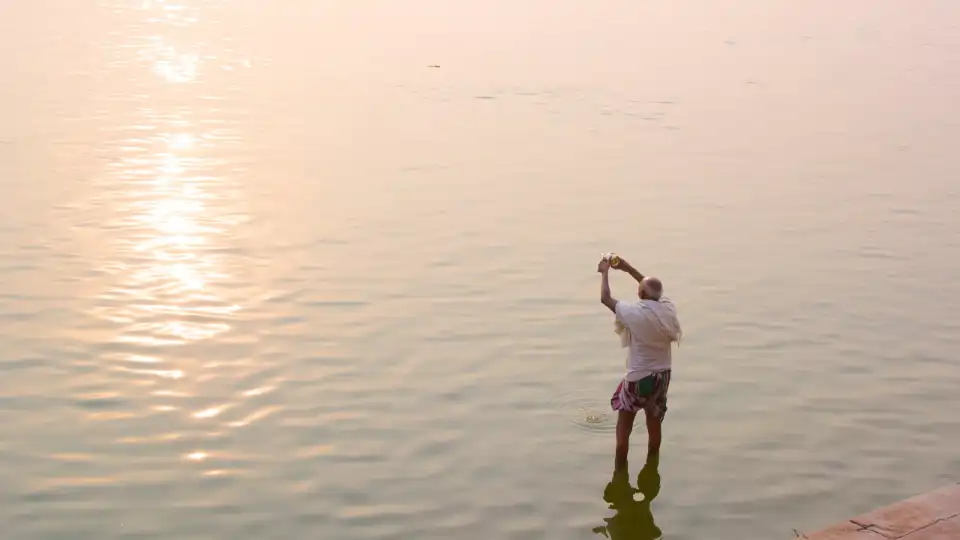
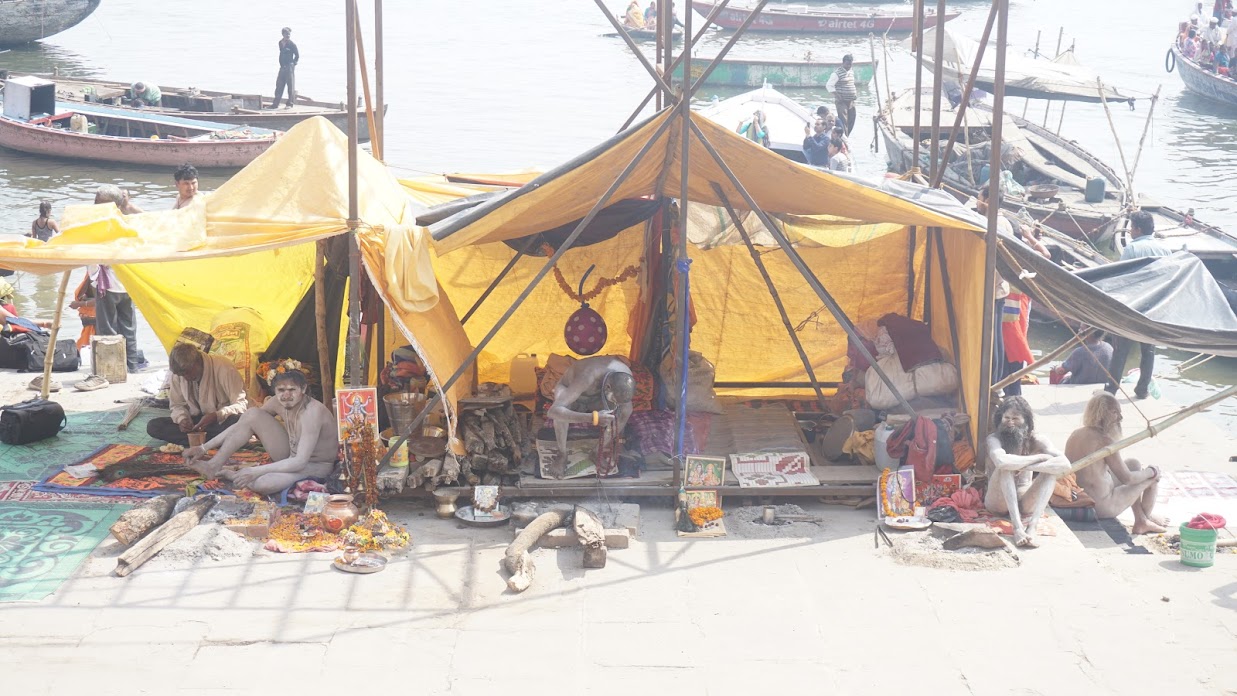
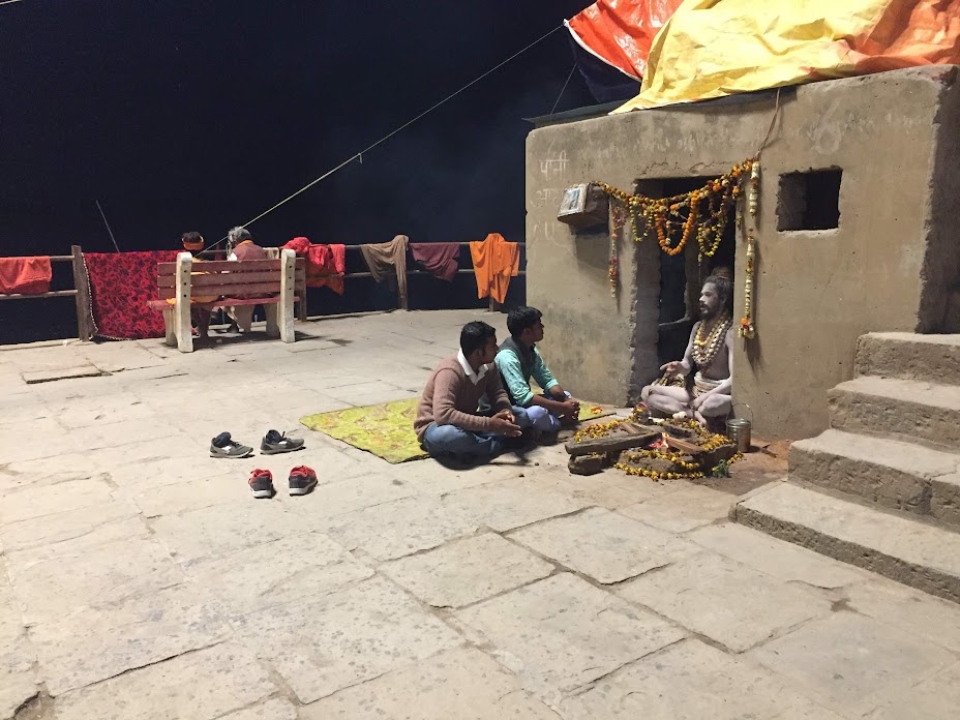
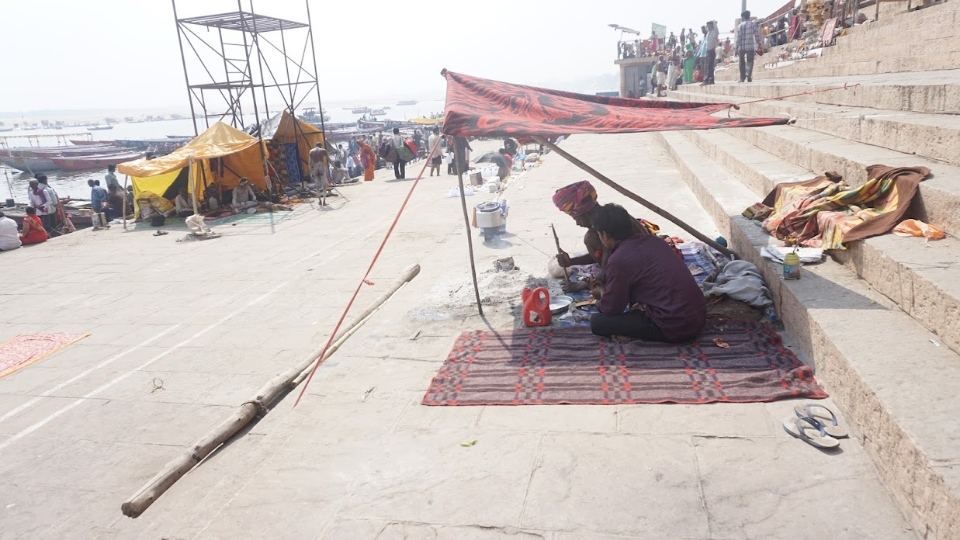
The city of Varanasi (ancient name Benares, Banares, Kashi) is located on the banks of India’s most sacred river – the Ganges. This great ancient city is known by many names such as “City of Academics”, “City of Philosophers”, “City of Light”. Varanasi is also one of the oldest continuously inhabited cities in the world.
In the Hindu mind, going to Varanasi is a blessing, but being cremated by the river in this city is truly a great grace. As for Buddhists, Varanasi is a must-visit place at least once in a lifetime, because it also houses the relic of Sarnath (Deer Park), where the Buddha gave his first sermon.
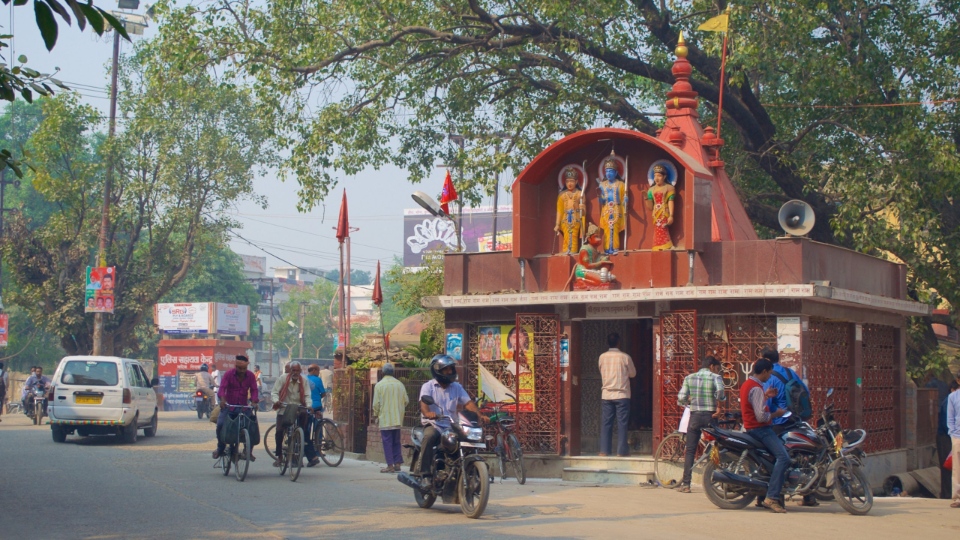
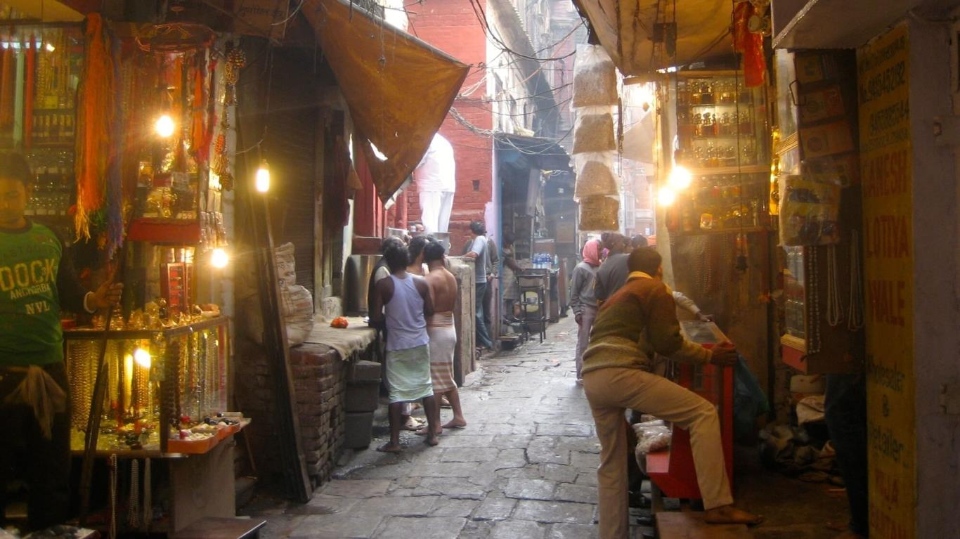
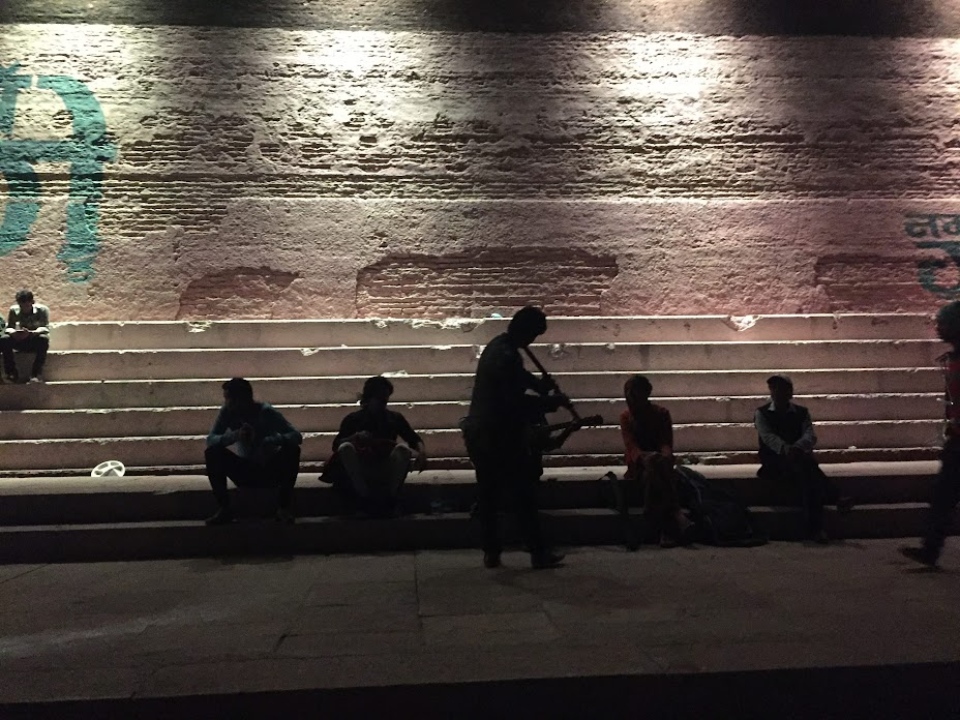
Along with Haridwar, Varanasi is one of the holiest cities for Hindus. The place where every Hindu wants to at least once bathe in the sacred Ganges River here. And when they die, their wish in life is to be cremated and scatter their ashes into the Ganges from here. If you are not a Hindu, Varanasi is well worth a visit because it is the oldest city that has been inhabited for more than 5000 years. And Varanasi is also a sacred land of Buddhists, is one of The Four Holy Places of Buddhism with Sarnath Deer Park where Shakyamuni Buddha gave his first sermon after attaining enlightenment.
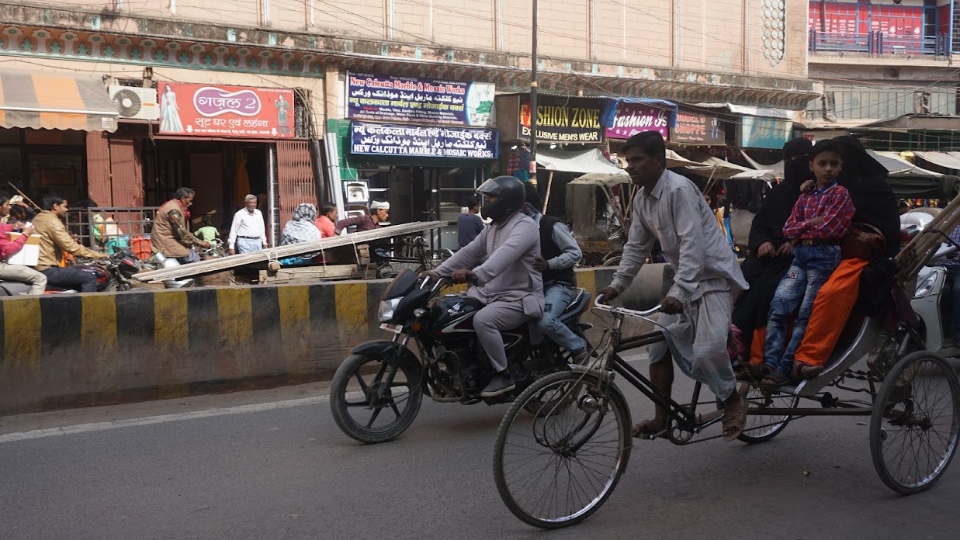
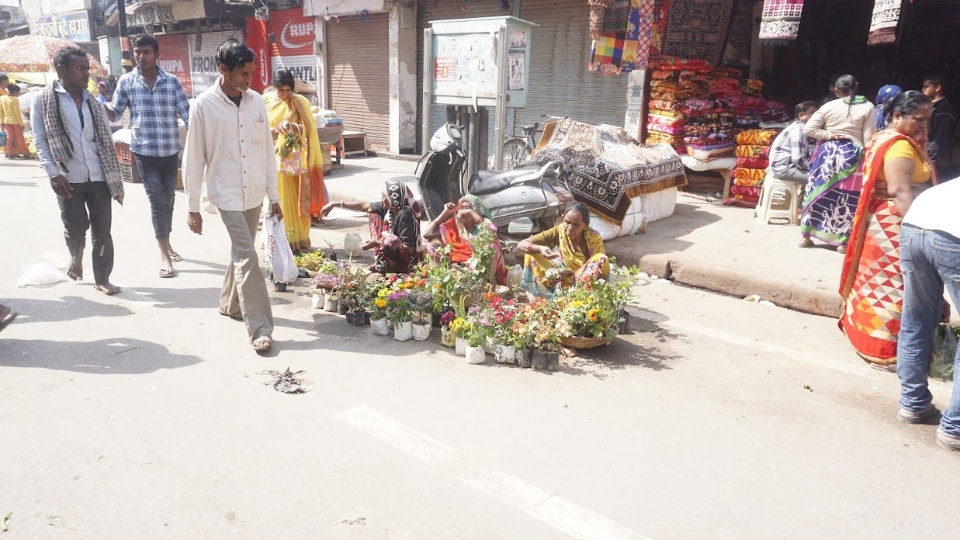

If New Delhi is easily annoyed by the noise, hustle and bustle, mixed with dust, are the uncertainties of life in scammers, from tricycle, taxi, ticket, trains, hotels… always make you feel insecure in a foreign country. Arga overwhelmed people with the symbol of love and romance Taj Mahal, when coming to Varanasi, the “life” feature of a prosperous royal citadel in the past, it is still enough to find in it many strange features from street food with the famous Naan bread – a daily dish of Indians, to the crispy Samosa pillow cake with delicious curry flavor, a cup of fermented goat’s milk (Lassi)… delectable and surprisingly cheap.
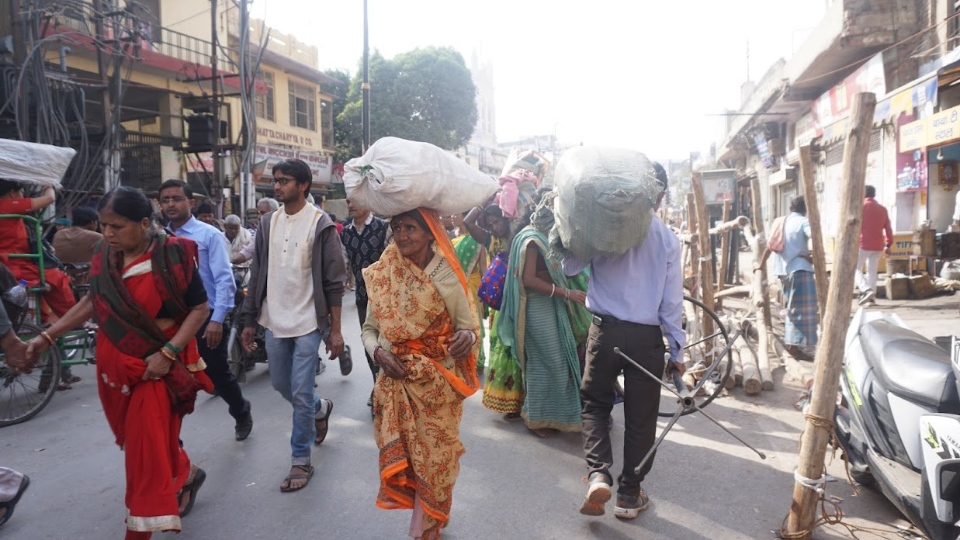
It is said that, coming to Varanasi there are two types of people: either to enjoy life, or to wait for death. Unlike other tourist places in India, here there is a breath of religion, belief and atmosphere that really makes a difference. People come here to die, but this is not a city of the dead, there are thousands of stories being told every day, through every street corner, every smoke of prayer.

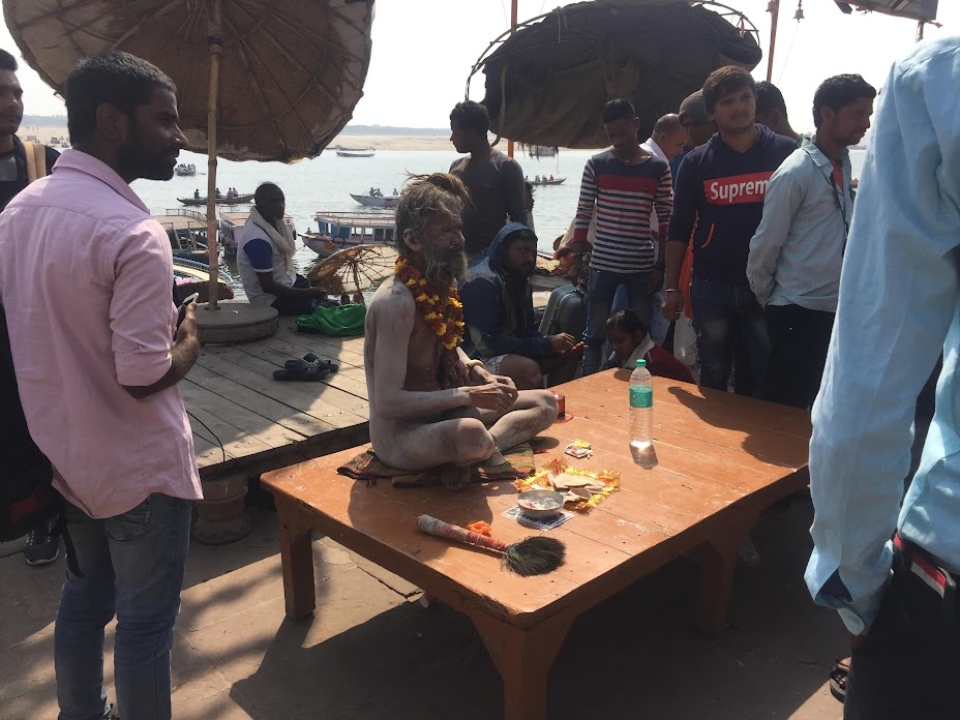
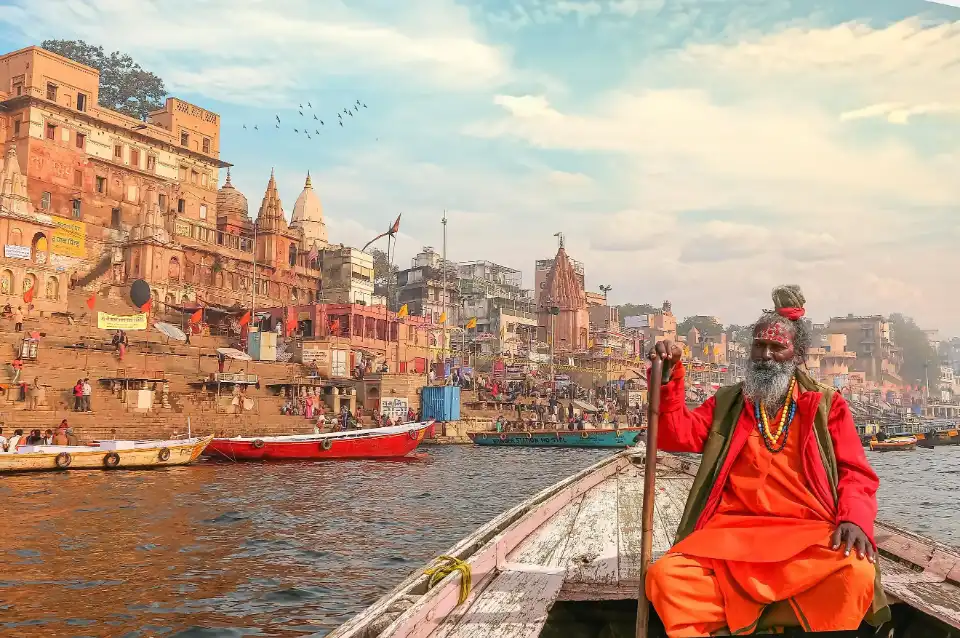
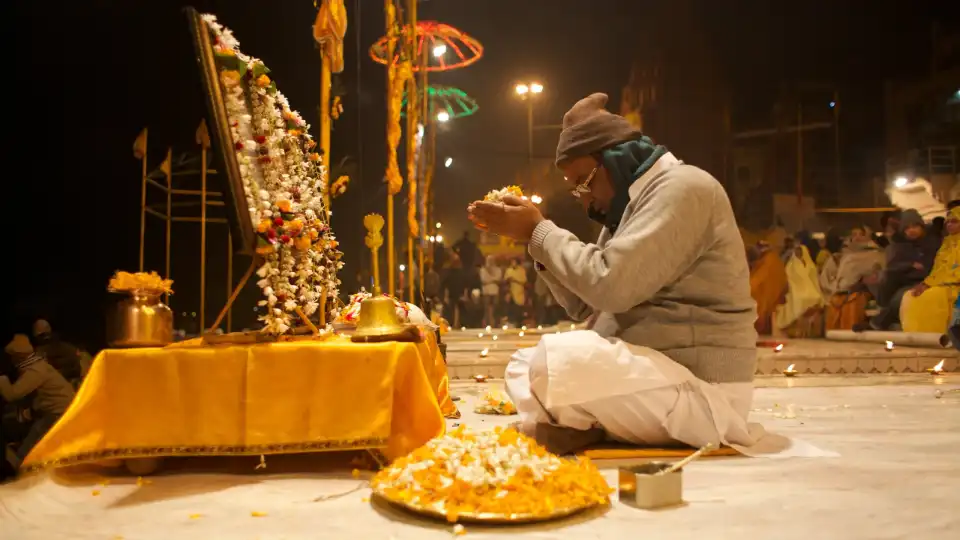
Many tourists don’t come here to shop, they come to see what a real funeral is like. Cremation and all stages are public. Unlike other cultures, death here is not a taboo, gods, demons, etc. are always stories mentioned with unending passion.
When to come? (#varanasi travel blog)
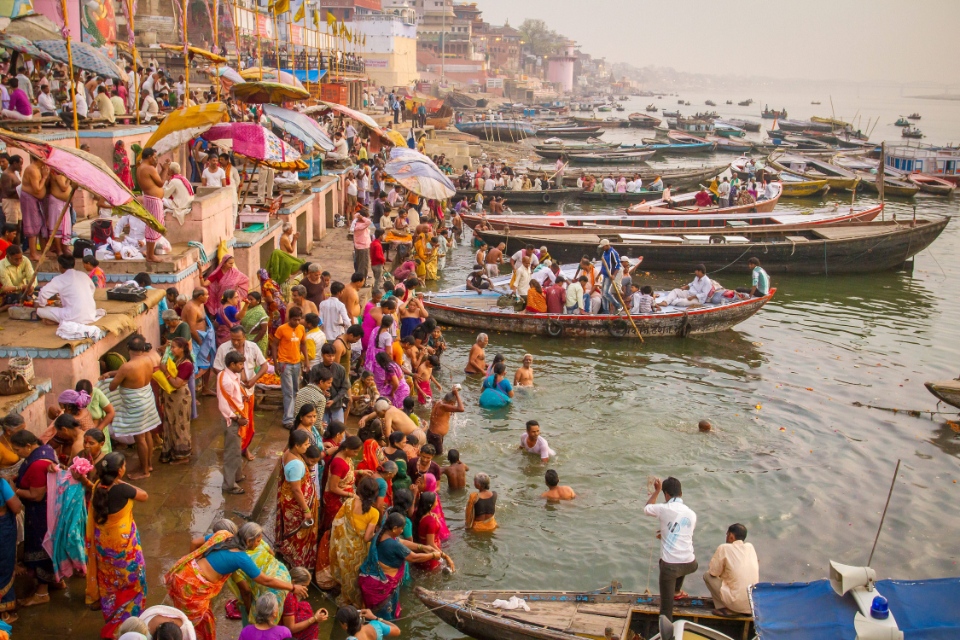
Best time to visit Varanasi is in winter from October to March. The weather is cool during this period, the weather is not so hot and it is dry and the temperature even falls down to 5 degrees Celsius and the cold wind blowing from Himalayan mountains make the weather even colder.
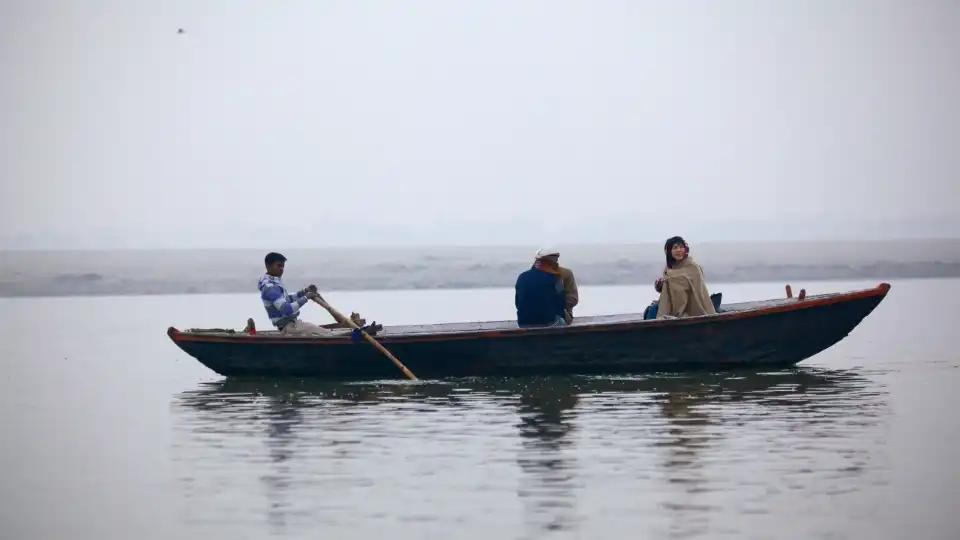
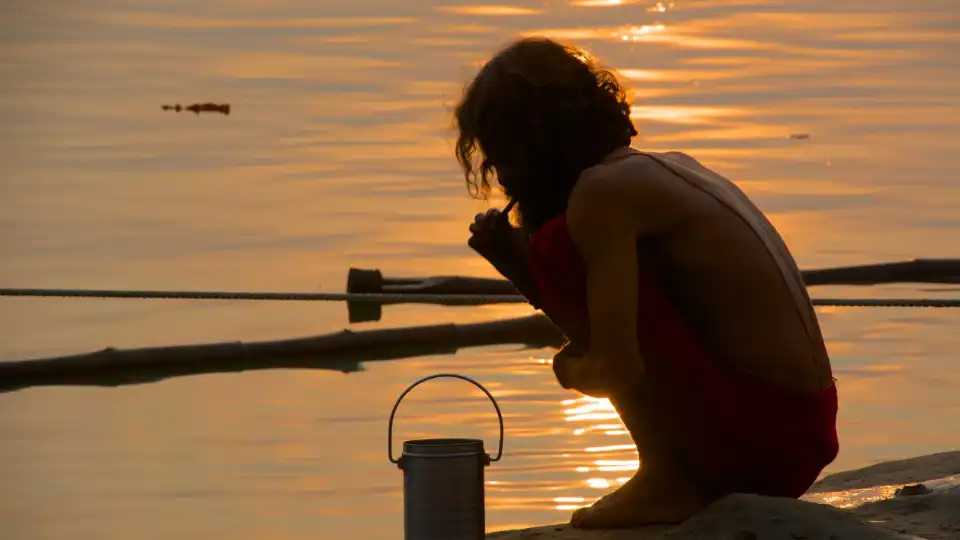
How to get to Varanasi? (#varanasi travel guide)
Varanasi is located about 1 hour by flight from the capital New Delhi or if you want to take the train it will take about 10 hours. You can easily reach Varanasi in several ways:
Airplane (#varanasi travel blog)
Lal Bahadur Shastri Airport (also known as Babatpur Airport or Varanasi Airport) is 18 km northwest of the city center. Domestic airlines such as Air India, IndiGo, SpiceJet, Jet Airways and Vistara connect Varanasi with other cities in India. In 2005, the airport was recognized for international standards and served routes to Sharjah, Kathmandu, Colombo, Bangkok. Air India Express, Buddha Air, SriLankan Airlines, Thai Airways, and Thai AirAsia are the international airlines operating at the airport. However, in winter, flights can be delayed or canceled at the last minute due to dense fog in the city.
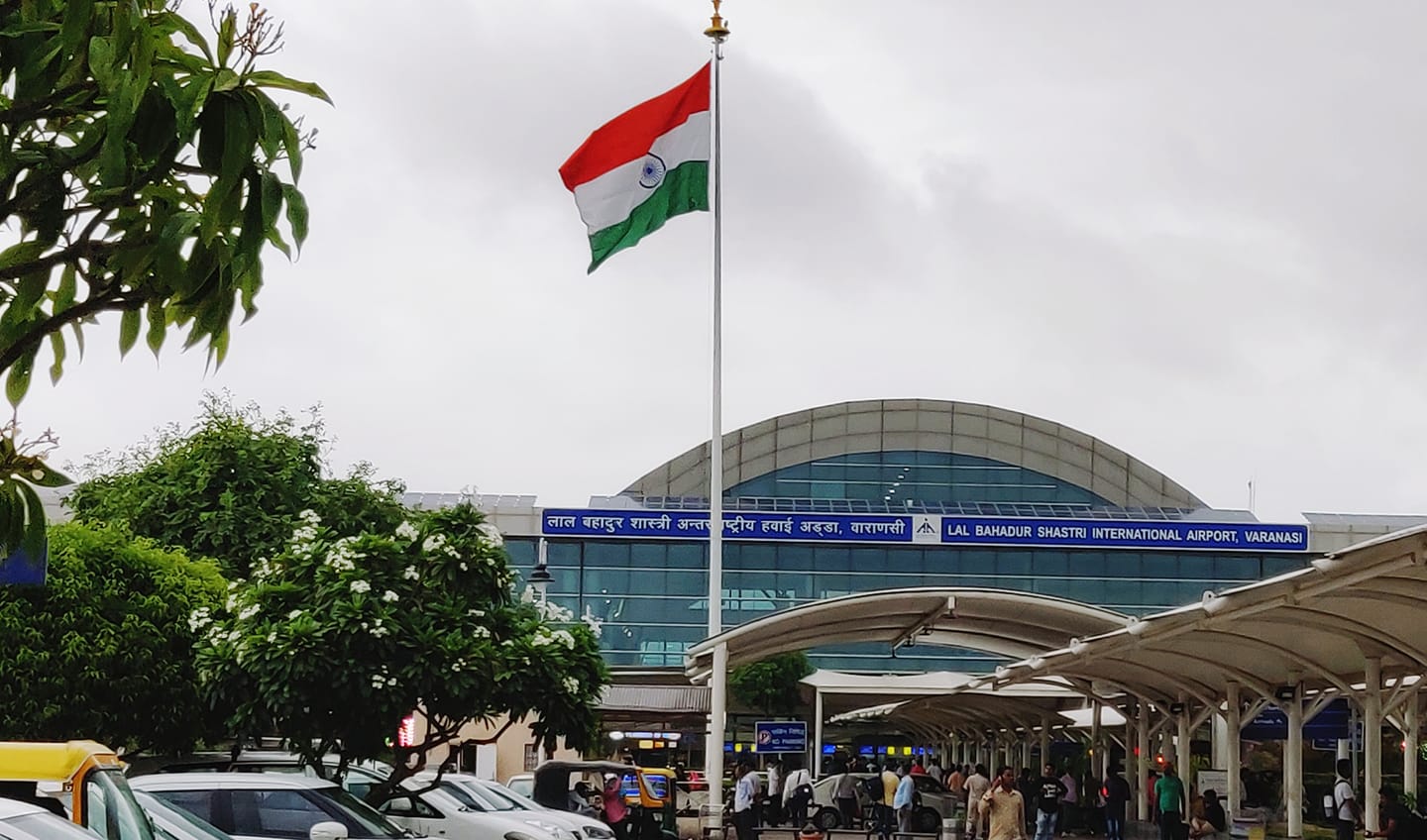
To hunt cheap airfares or best routes you can go to Google Flights, Skyscanner or Kayak.
Bus
Varanasi is connected to Kolkata, Agra, New Delhi, Hyderabad, Bangalore… through National Highway No. 2, 7, 29 and 56.
Train
Varanasi Junction (also known as Varanasi Cant.) is the city’s largest station, serving nearly 360,000 passengers daily. There are 240 trains connecting Varanasi with major cities such as Surat, New Delhi, Kanpur, Ahmedabad, Lucknow, Kolkata…
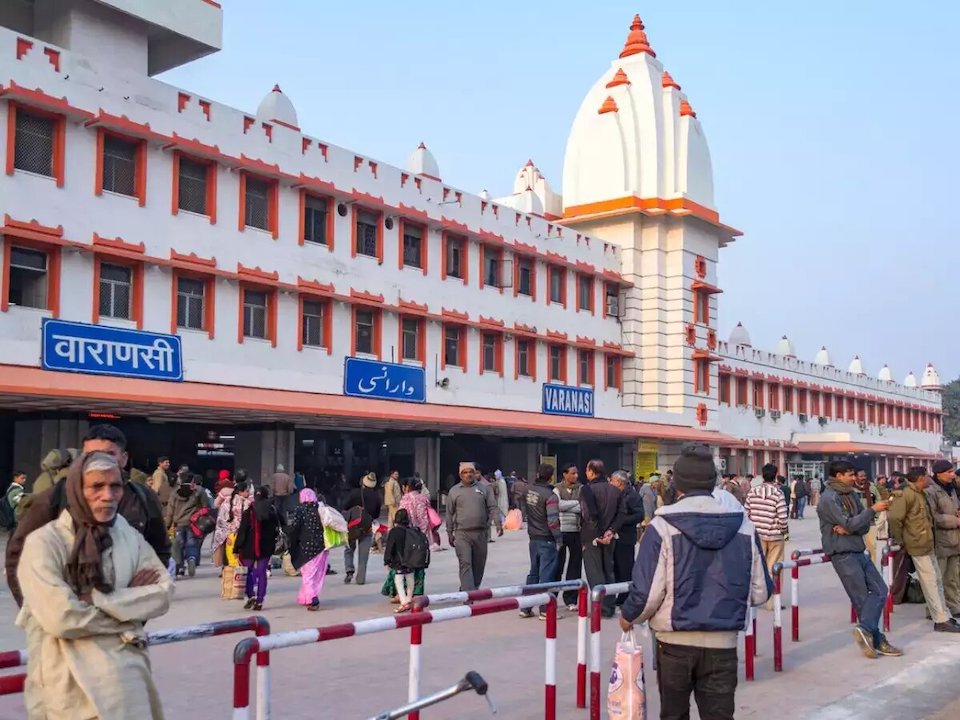
Getting around Varanasi
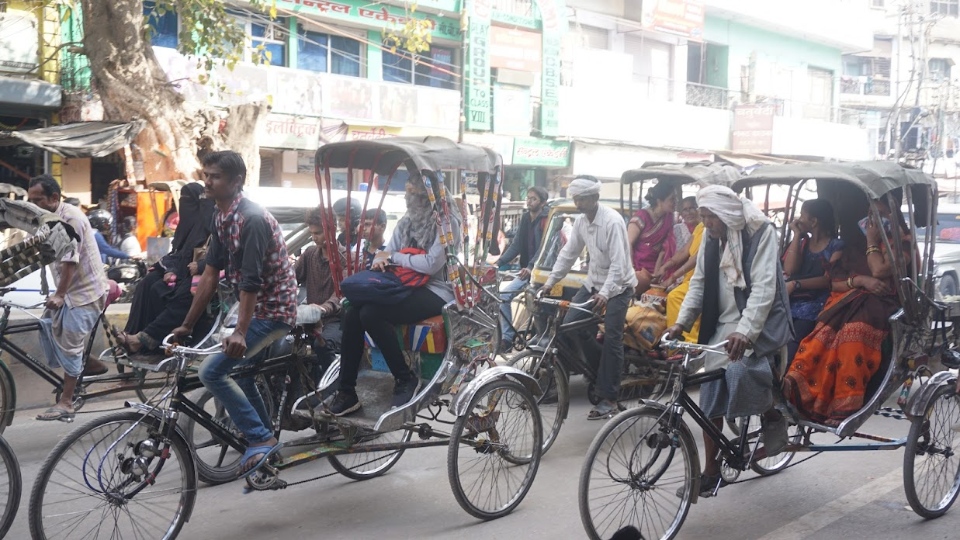
In Varanasi, there is no subway (metro), buses are also limited, so the popular means of transportation is auto rickshaw. Definitely you need to bargain. The price is about 15 rupees/km. You should check the distance between the origin and destination in advance to calculate the appropriate price. If you go many points during the day, you can completely negotiate a full-day package price and only pay after the end of the day.
When exploring the old town of Varanasi, you should walk to see more clearly the cultural colors. A little tip if you get lost in the small winding alleys here: all roads lead to the Ganges!
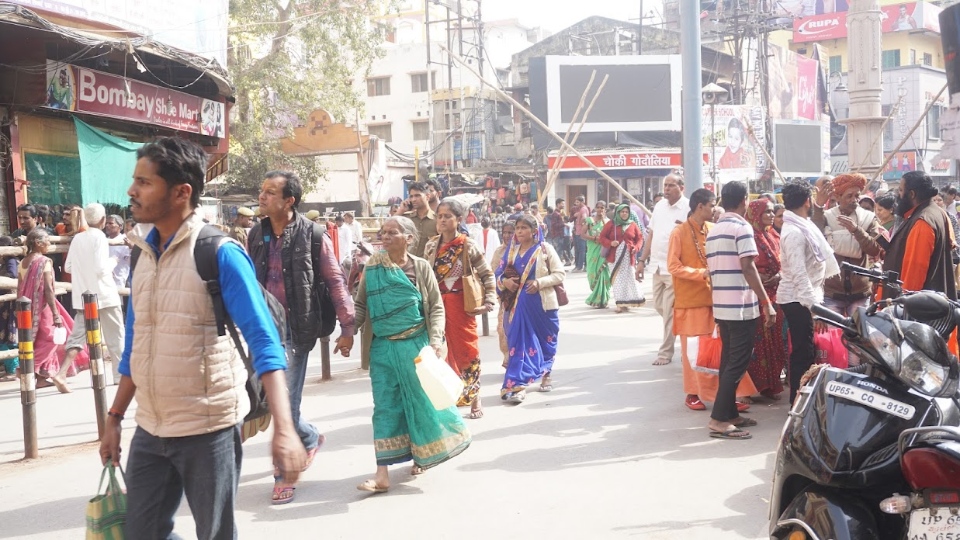
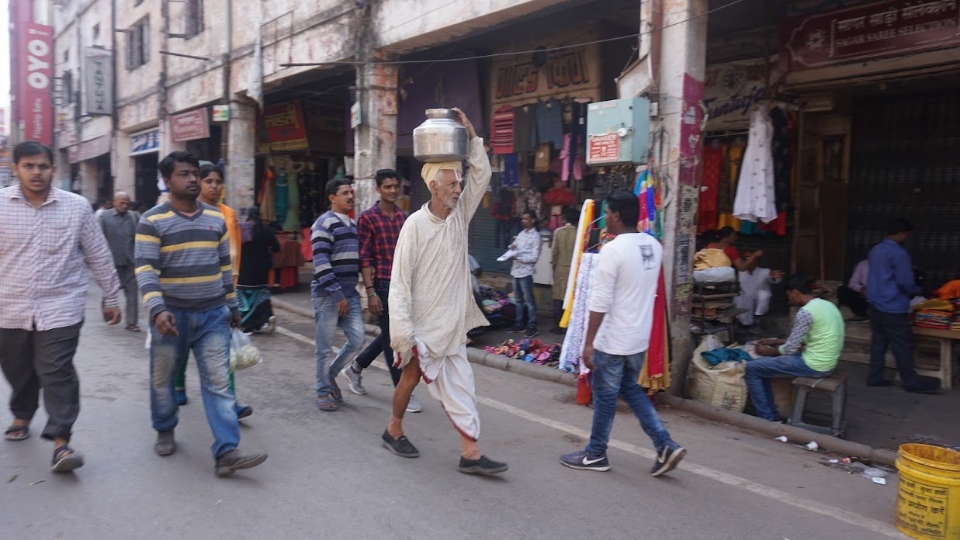
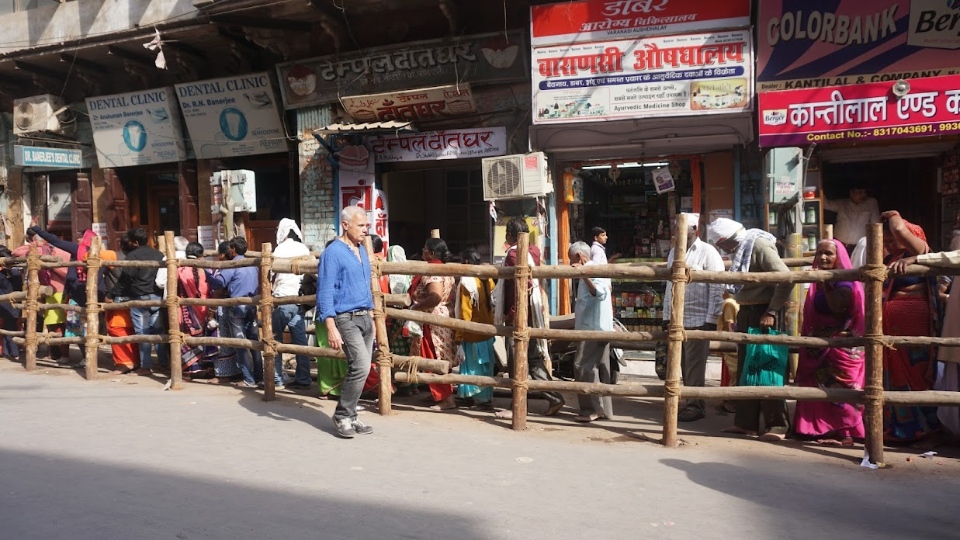
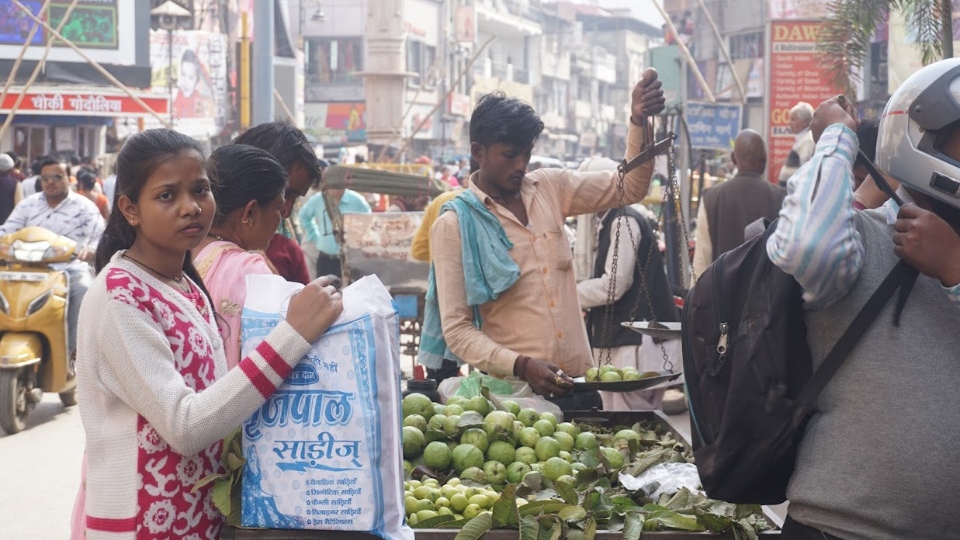
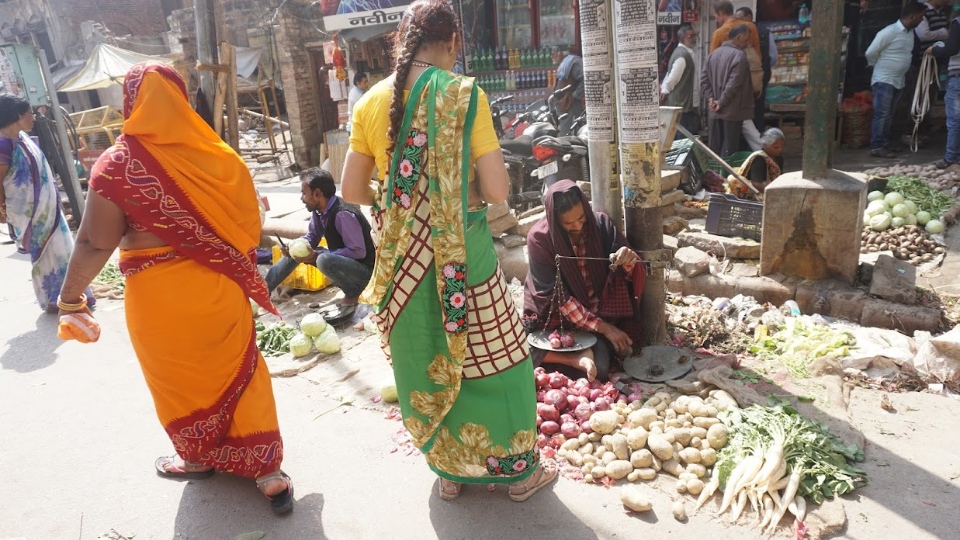
In addition, sailing on the Ganges at dawn or dusk is also an experience worth trying. If you want to go in the morning, you must book the night before. Price is about 150 rupees/small boat 4 people/hour.
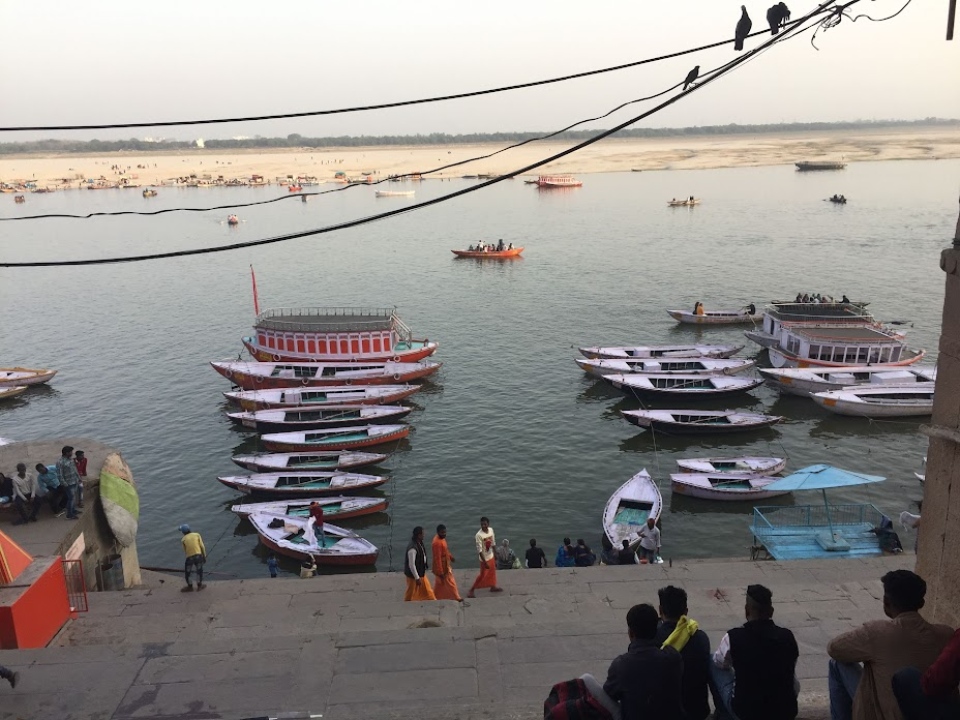
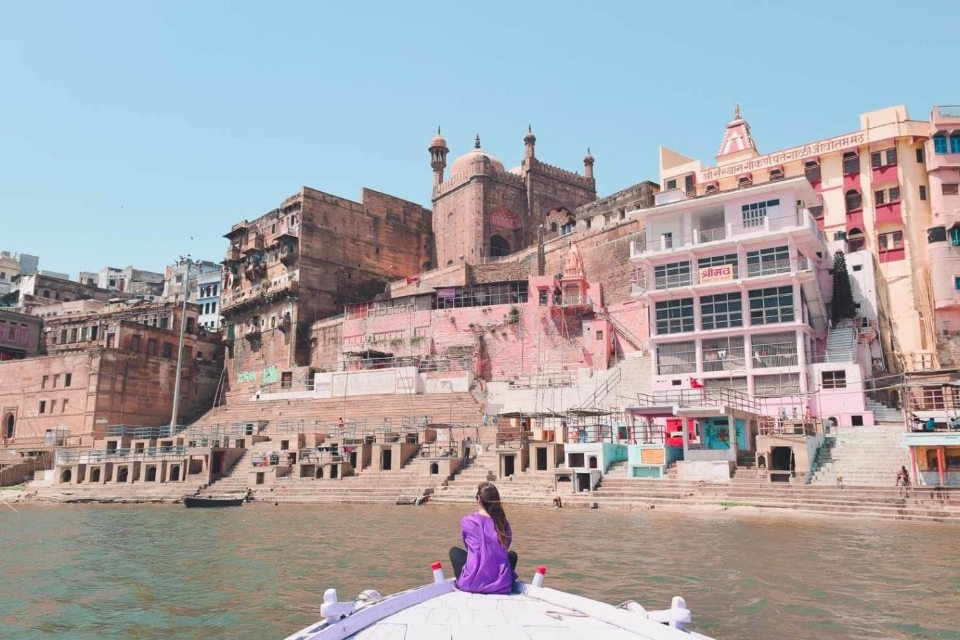
Where to stay? (#varanasi blog)
You should choose a hotel in the Assi Ghat area, one of the cleanest ghats in Varanasi. From Assi Ghat, it is also very convenient to walk to other ghats.
Our group stayed at Stay Inn Hostel (Agoda, Booking), Address: B 1/128 c – 5 Plot no. 5 Dumrao Bagh Colony Assi, Varanasi. The price is about $3/person in the dorm room. The hostel is 400 meters from Assi Ghat, close to the main road, restaurants and markets so it is very convenient. You can borrow the hotel’s kitchen to cook. The dorm room is cool and clean, however, there is only a ceiling fan without air conditioning and there are many mosquitoes at night.

If you require higher room quality, you can refer to Rahul Guesthouse (Agoda, Booking), price $15/room for 2 people/night, $45/room for 3 people/night. Address: N1/15-D10 Gangotri Vihar, Nagwa, Lanka, Varanasi.
Room rates are higher than the average in India, so the quality is also better. The bedroom is spacious, clean and has air conditioning. The bathroom is clean and very spacious, even with a ceiling fan inside. There is a restaurant on the rooftop with room service.
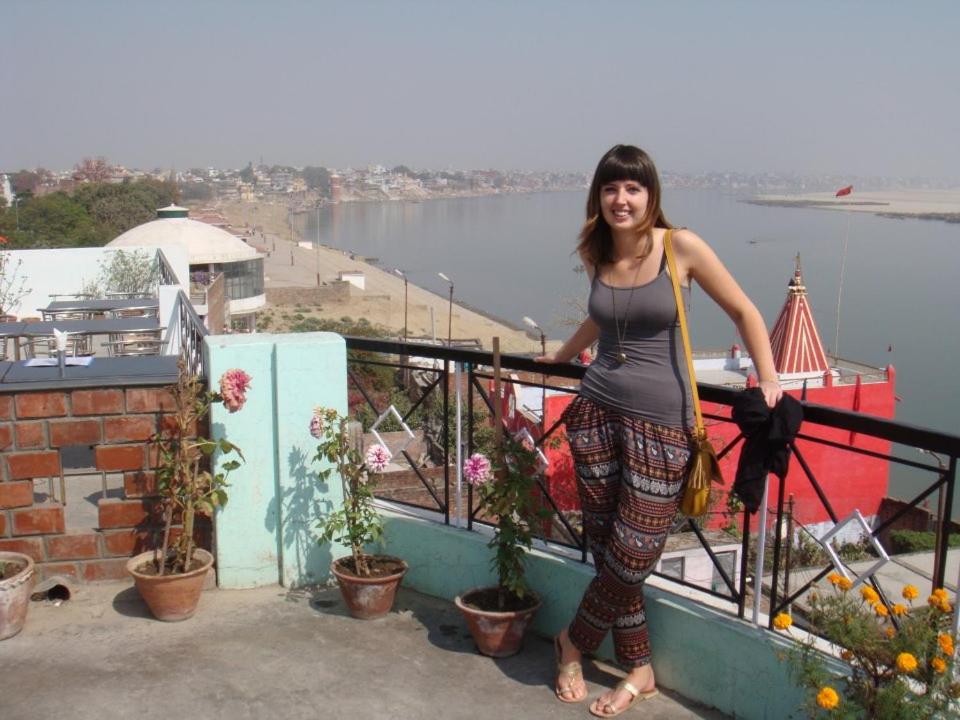
The biggest downside is the location. Actually, it’s not too far from the hotel to the ghats (stepped water wharf) (more than 15 minutes on foot), but the road leading there is littered with garbage, waste, and all kinds of junk, which is horrible. If you want to catch a rickshaw, you have to walk about 5 minutes to the main road, but there is no rickshaw in front of the door like other places. In addition, wifi is only available in the rooftop restaurant, other areas of the house are not available, however, the wifi speed is very slow.
Below we recommend more best budget, mid-range and upscale hotels with good ratings and reviews you can refer to.
- Taj Ganges, Varanasi (Agoda, Booking)
- Stay Banaras (Agoda, Booking)
- Ramada Plaza by Wyndham JHV Varanasi, Cantonment (Agoda, Booking)
- BrijRama Palace (Agoda, Booking)
- Ramada by Wyndham Varanasi Katesar (Agoda, Booking)
- Ganpati Guest House (Agoda, Booking)
- Hotel Four Element (Agoda, Booking)
- Hotel Temple on Ganges (Agoda, Booking)
- Radisson Hotel Varanasi (Agoda, Booking)
- Hotel Surya Kaiser Palace (Agoda, Booking)
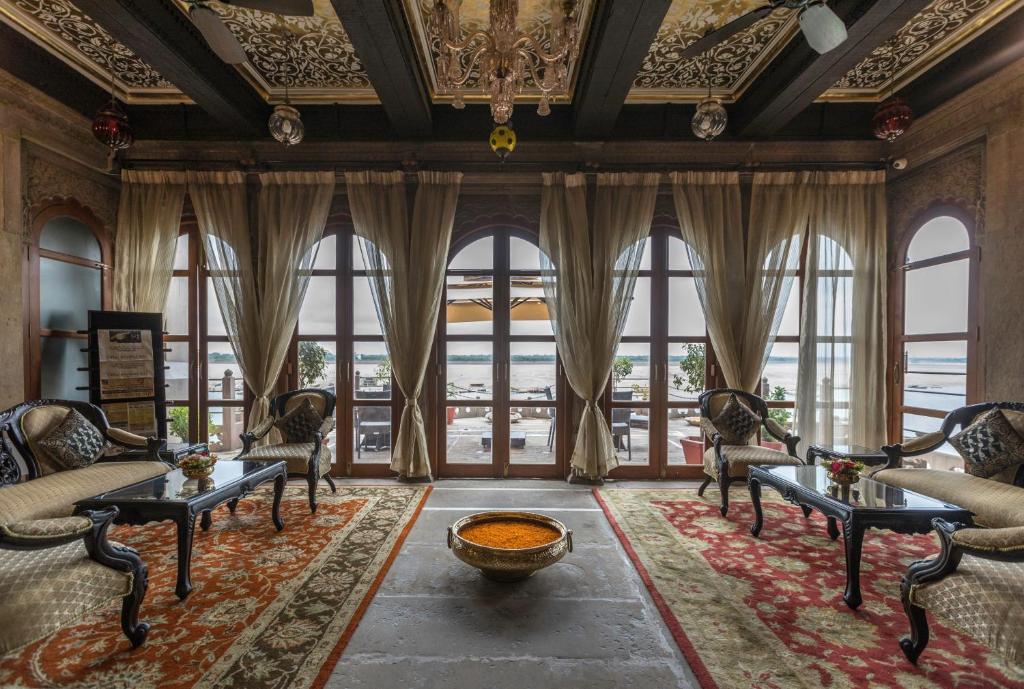

Check out more top and best hotels in Varanasi on Agoda.com or Booking.com
Where to go and what to do in Varanasi? (#varanasi guide)
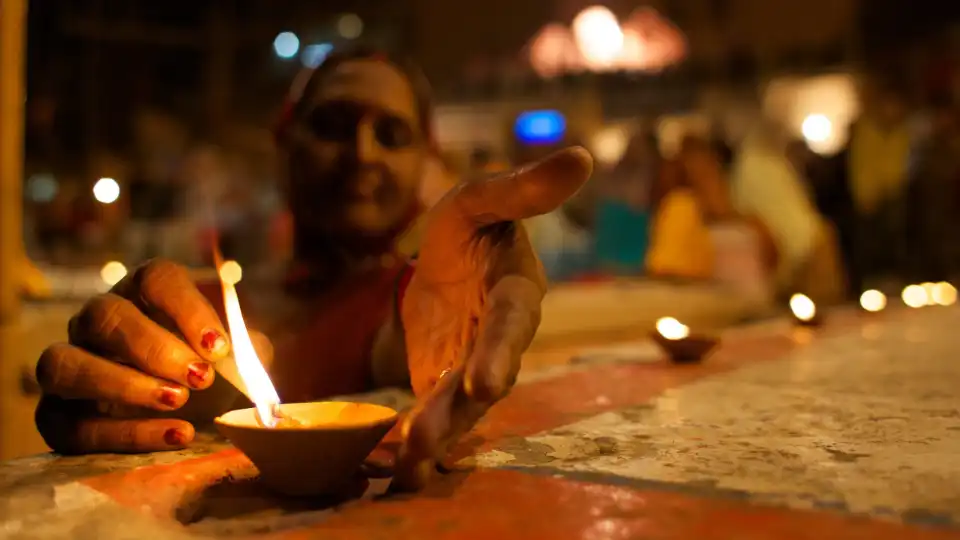
Spreading along the banks of the Ganges in Varanasi, there are about 87 water wharfs (called ghats). Most of them were built after 1700 AD, when the city was under the rule of the Maratha empire. Most ghats are used for bathing, a few are used for funeral rites such as the Manikarnika Ghat.
Assi Ghat
- Location: Located at the southernmost end of the Varanasi river wharf, at the confluence of the Ganges and Assi rivers. Location on google map.
- Entrance Fee: Free.
- Opening hours: Every day of the week.
- Note: Take this ghat as the first point to navigate other ghats on the map.

Located on the south side of the Ganges River, Assi Ghat is one of the ghats chosen by many tourists to explore and participate in attractive festivals in Varanasi. This is also the residence of a large number of students, researchers, tourists in the city to study at Barana Hindu University and some other famous institutions.
When coming to Assi Ghat, you will admire the temple of Sankat Mochan Hanuman or pray at a sacred Shiva Linga placed under a peepal tree. You can also take a scenic boat ride around or hop on a hot air balloon to enjoy the stunning views of Assi Ghat from above, indulge in art shows in the evening, and enjoy delicious home-cooked meals. shops or cafes in the area near this ghat.

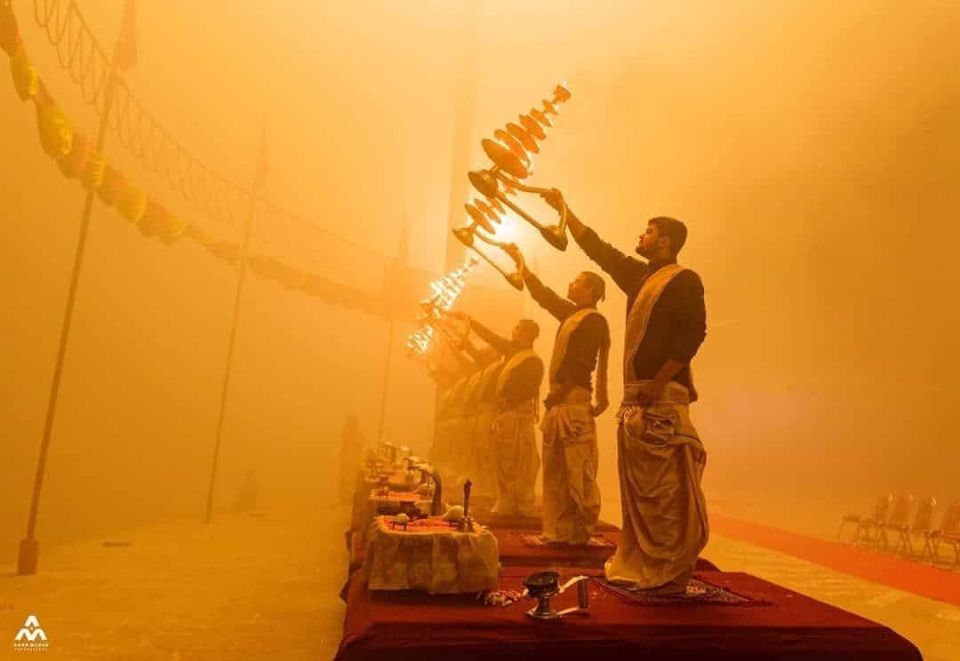
This is a sacred ghat dedicated to Lord Shiva, the god who created Varanasi. Temples at this and other places in Varanasi often take the form of Mount Kailash or Meru Parvat in the Himalayas, the birthplace of Lord Shiva.
Dashashwamedh Ghat (Main Ghat)
- Location: About 2.2 km from Assi Ghat, next to Kashi Viswanath Temple.
- Entrance Fee: Free.
- Opening hours: Every day of the week.
One of the most famous and oldest Ghats in Varanasi is the Dashashwamedh Ghat. This is also the place associated with 2 interesting Hindu legends about the formation of this ghat. First, Dashashwamedh Ghat was created by Lord Brahma to welcome Lord Shiva. Another legend holds that Lord Brahma sacrificed 10 horses during the performance of Dasa Ashwamedha yajna.
Dashashwamedh means “God Brahma sacrificed 10 horses here”. This is the ghat located in the center and also the busiest one. You will witness a world where all the opposites come together: fun, colorful, whirling, chaotic, divine, mundane. The living go hand in hand with the dead. Cows, goats, and dogs roam the streets of the market, jostling with people. From luxurious regal to low-class, beggars, pickpockets, thieves. From prayerful devotees to false ascetics, deceiving pilgrims. From flamboyant brocade to ascetic, naked, messy hair, a life without combing or cutting.
At 7pm every day, it celebrates Ganga aarti, which pays homage and gratitude to the goddess Ganges (Hindu’s Mother River). Five altars were established with five young priests as their representatives, the ritual began with a resounding chant, then, five priests used horns and urged them in long stanzas. Thousands of people crammed together at the riverbank to pray respectfully, the ceremony was ended with lanterns lighting candles, attaching flowers to a section of the Ganges.
Ganga Aarti is a ritual performed by some priests carrying Deepams, lamps and moving rhythmically to the tune of bhajans dedicated to the goddess Ganga. These rituals are conducted twice a day at dusk and dawn. Especially in the evening, devotees drop lanterns on the water, creating a shimmering, fanciful scene that is unmatched.
Manikarnika Ghat (Burning Ghat)
- Location: About 2.7 km from Assi Ghat, between Dashashwamedh Ghat and Scindia Ghat.
- Entrance Fee: Free.
- Opening hours: Every day of the week.
Manikarnika Ghat is the oldest and holiest ghat in Varanasi. According to legend, when Raja Daksh Prajapati, a son of Brahma, insulted Shiva, goddess Mata Sati set herself on fire in protest. Taking pity on Sati, Shiva took her burned body back to the Himalayas. Unfortunately, on the way, body parts fell to earth. At the places where her body fell, Shiva established temples called Shakti Peeth. There are 51 Shakti Peeth corresponding to 51 Sanskrit letters. Manikarnika Ghat is where Sati’s earring fell (in Sanskrit, Manikarnika means “earring”).
This is a place that you should not miss when you want to discover the unique customs of India. Manikarnika Ghat is one of the oldest and most sacred ghats in the city of Varanasi. Most cremation rites in Varanasi are conducted at this ghat. Visitors can watch the cremation rites with guides or take a boat ride from afar. However, they will not be allowed to use cameras and must show respect for the ceremony.
At this Manikarnika ghat there is a well of the same name, which is said to have been dug by the god Vishnu for Shiva and his wife Parvati to bathe in order to hope that Shiva would “lower fire” and not destroy the earth. Between the well and the ghat is a Charanpaduka stone pedestal bearing the footprints of Vishnu.
Visiting Manikarnika Ghat, you can also witness the cremation ceremony of the Indians. Hindus believe that being incarnated in the fire and returning to the mother river will help wash away all sins, free the soul from the body, and bring them to nirvana.
For more than 2,000 years, the fire that burned bodies at Manikarnika Ghat has never cooled down. It is estimated that every day 200 bodies are burned and the ashes are scattered into the sacred river. Poor families who could not afford the cremation had to simply wrap the dead body, and so let it be released into the river. In addition, children, saints, pregnant women, and people bitten by cobras are not allowed to be cremated, but only tied to rocks and drowned in the river.
Kashi Vishwanath Temple (Golden Temple)
- Location: Located on the west bank of the Ganges River, Vishwanath Gali is the easiest way to reach the temple.
- Entrance Fee: Free.
- Opening hours: 3PM to 11PM on weekdays.
- Note: Do not bring bags, phones, pens into the temple.
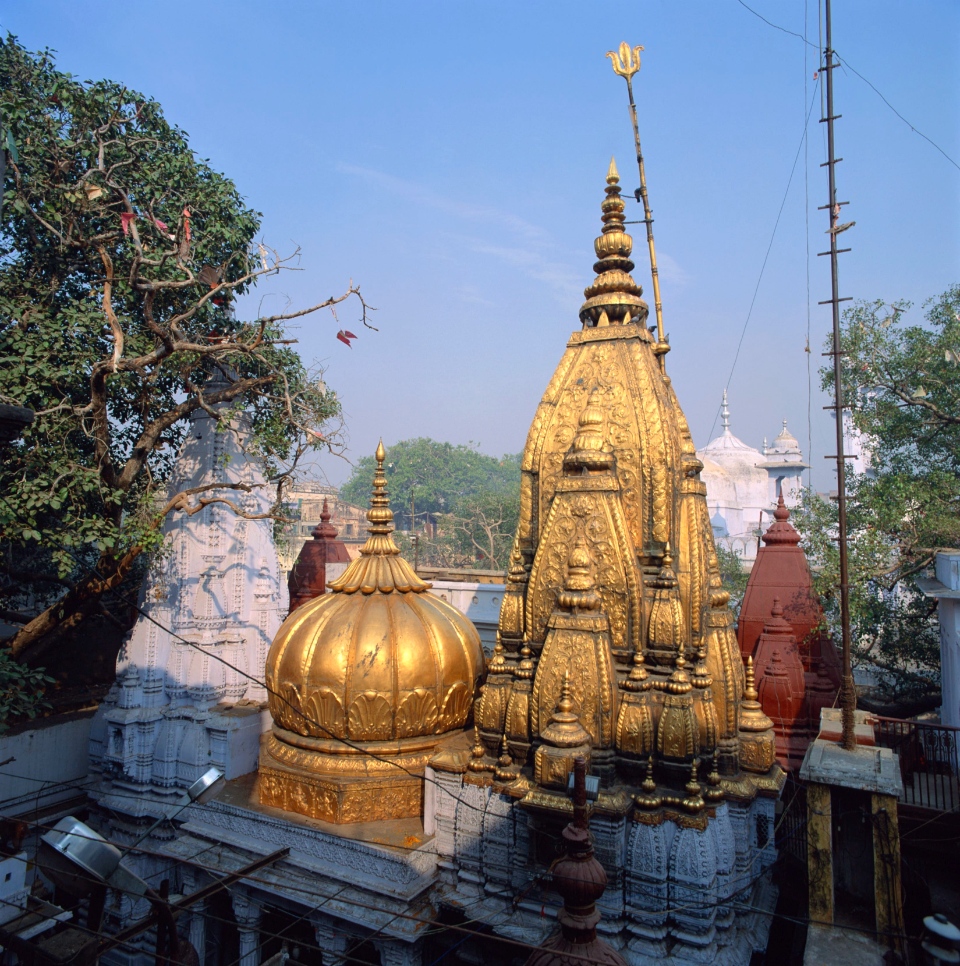
One of the most famous Hindu temples dedicated to Lord Shiva. The word “Kashi” in the name of the temple is the old name of the city of Varanasi. The temple has been destroyed and restored many times in its history. In 1669, Aurangzeb, the sixth Mughal emperor, demolished the temple and built the Gyanvapi Mosque instead. In 1780, Ahliyabai Holkar restored the temple at a nearby location.
This is one of the holiest and most famous temples in Varanasi. This temple is located on the west bank of the Ganges and is one of the 12 Jyotirlingas, the holiest place of the Shiva temple. This temple attracts a large number of tourists every year, but they are only viewed from the outside because followers of other religions are not allowed to enter the temple.
Known as the Golden Temple, because the entire tower and dome of this temple is made of 800kg of gold donated by Maharaja Ranjit Singh in 1835. This is a place dedicated to the Hindu god Shiva, therefore when the followers of this religion believe that before entering the temple, one must wash thoroughly to be given more strength.
Kashi Vishwanath Temple receives about 3,000 visitors every day. This number can increase to 1 million visitors or more on festive occasions. The temple is easily recognized by its three 15.5 m high golden domes, donated by Maharaja Ranjit Singh in 1835.
Bharat Mata Temple
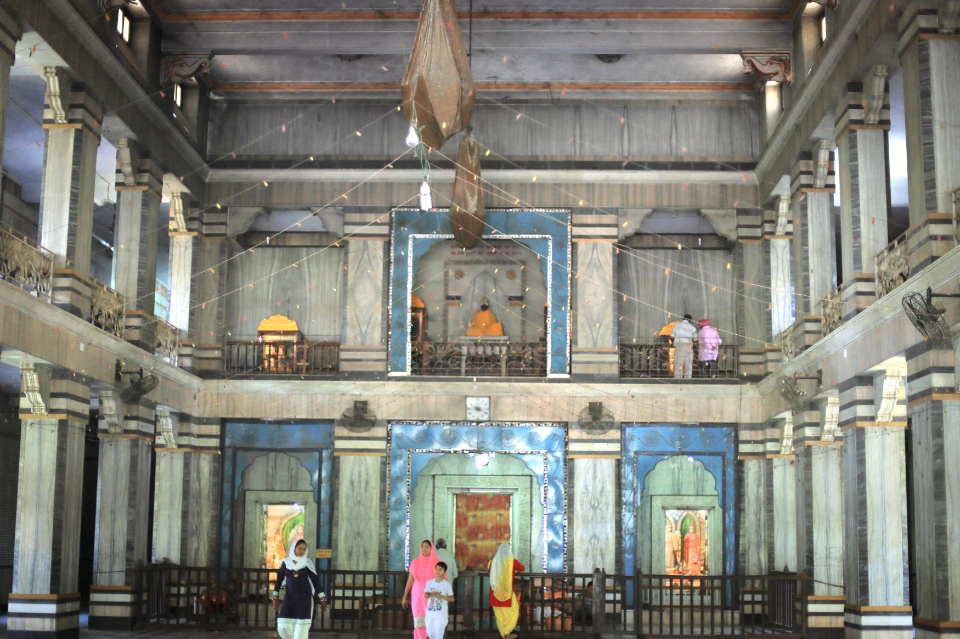
Bharat Mata Temple is located within the Mahatma Gandhi Kashi Vidyapeeth precinct in Varanasi. This is the only temple dedicated to Mother India, built in 1936 by Babu Shiv Prasad Gupta. At the temple there is a marble statue of Bharat Mata that symbolizes undivided India.
The temple currently has eight floors, each with a different theme, paying homage to the gods, warriors and leaders who played an important role in the formation and development of the country. The special thing at the temple is the relief map of India carved in marble depicting the mountains, plains and oceans in extremely precise scale. The temple is open to welcome all domestic and foreign tourists regardless of religion or belief to admire a unique and unique work in the world.
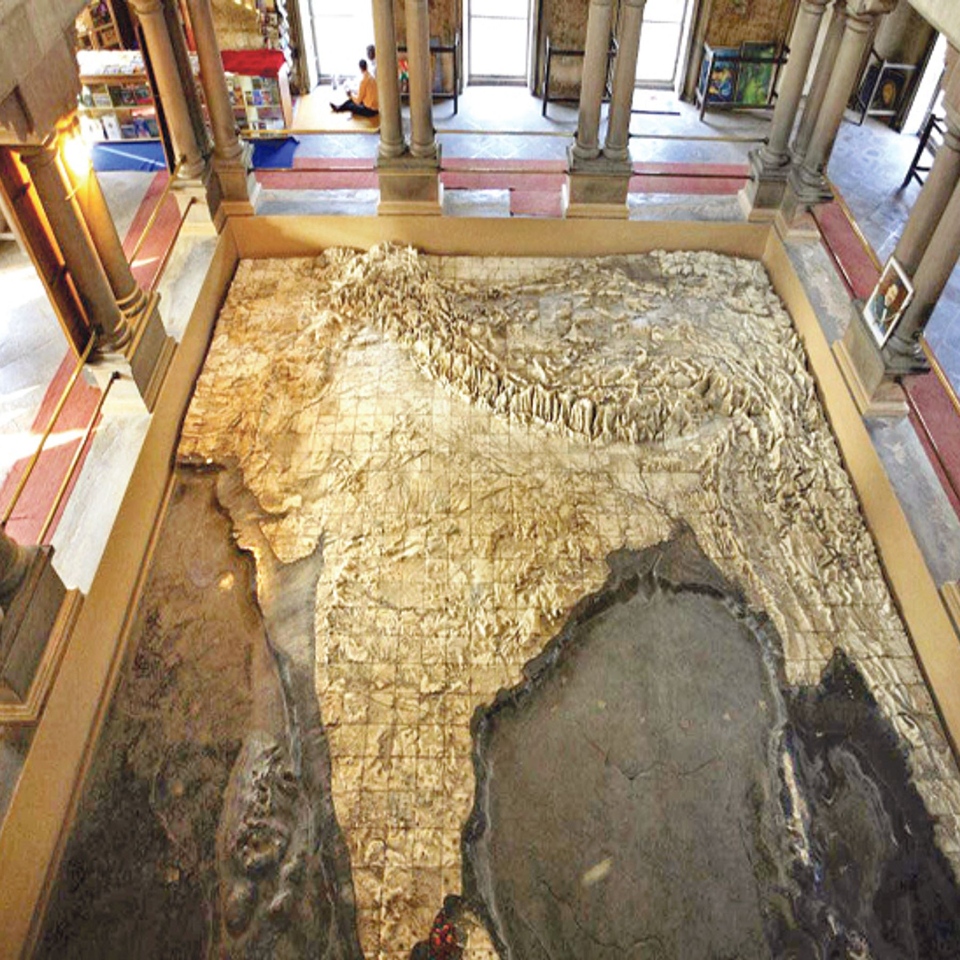
Holy River Ganga Ceremony
Varanasi is also famous for the Holy River Ganga Ceremony that takes place at dawn and dusk every day over the Ghats. In this Varanasia there are dozens of Ghats – Places where the kings and rich people of centuries ago built for themselves as a way to access and easily pray every day on the sacred river. There are many Holy River Ganga Ceremony taking place every day at the Ghats, but the most famous and the most crowded Hindu devotees are at Dasawamedh Ghat.
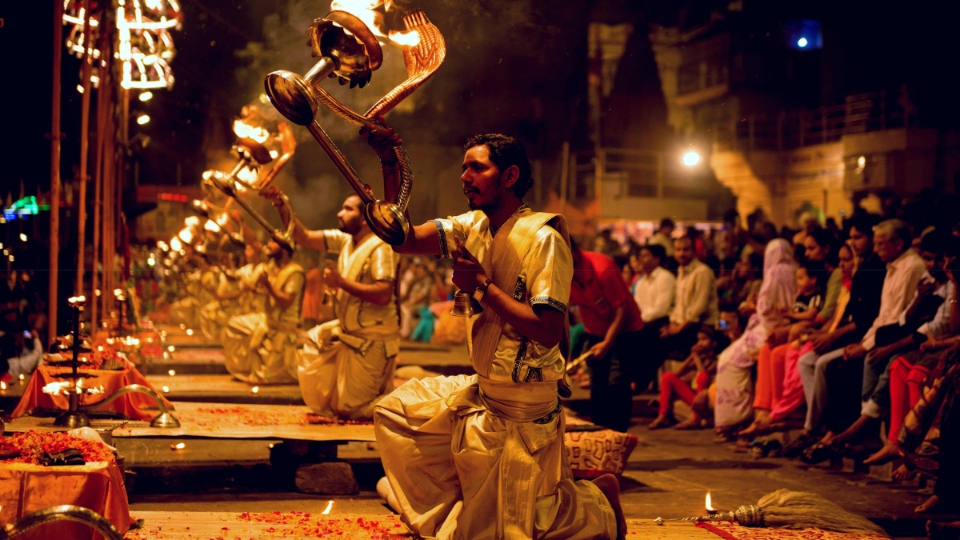
I also spent my two evenings in Varanasi watching the ceremony at Dasawamedh Ghat partly perhaps because it was here that I learned and observed most easily the ceremony atmosphere, the spirit of the Hindus and probably also a no small part because the 7 priests were so handsome, more outstanding than the monks in the rest of the Ghats with shaggy beards and big belly typical of Indians.
Bharat Kala Bhavan Museum
Address: Banaras Hindu University, Semi Circle Road No. 3 Opp Institute of Mgmt Studies, Varanasi, Uttar Pradesh 221005, India
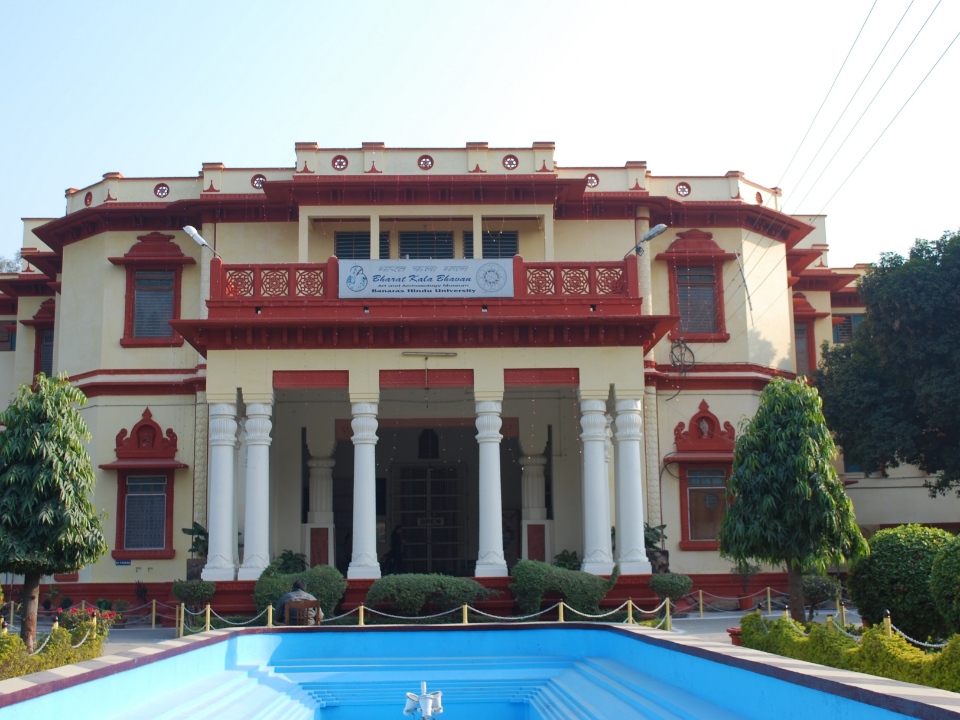
This is an art and archeology museum located on the campus of Banara Hindu University. Bharat Kala Bhavan is the oldest museum in India attracting many visitors every year. It keeps a lot of art sculptures, statues and historical artifacts through the ages.
At the Bharat Kala Bhavan museum, there are currently more than 100,000 collections of artifacts in many different fields. When coming to this museum, you will admire the jewelry from primitive times or the pottery and textiles of the indigenous tribes are extremely appealing. Do not forget to visit the gallery with miniature paintings of the Mughal period, religious sculptures, etc.
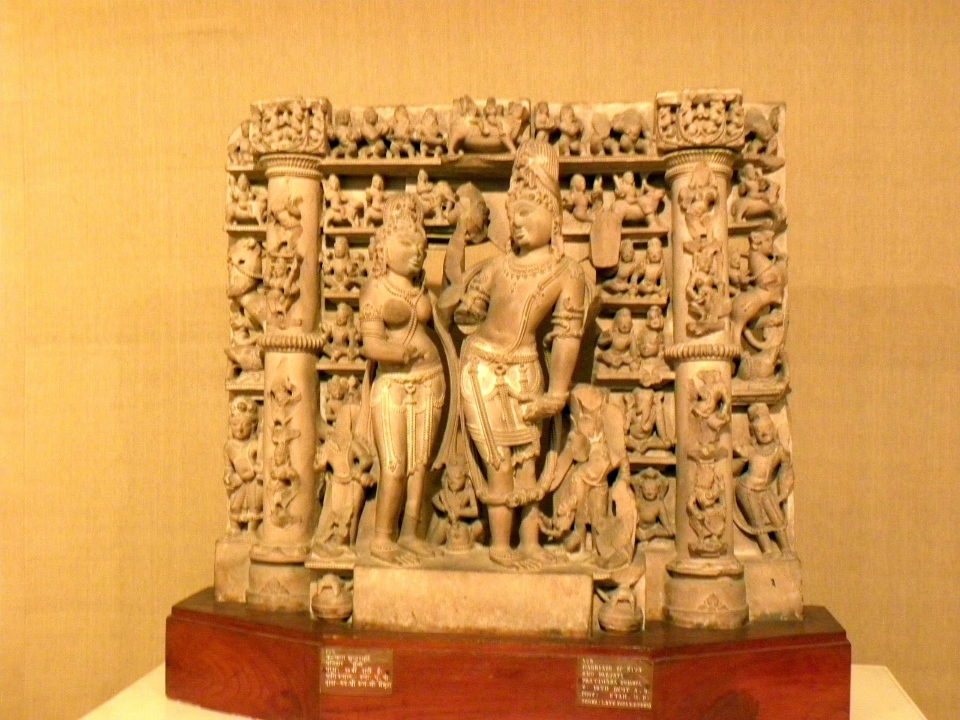
Vindam Falls
Address: 2JJ6+529, Windom Fall Rd, Gortutwa, Uttar Pradesh 231001, India
Hours: 6 AM–6 PM

Vindham waterfall is a tourist destination with unspoiled beauty that attracts many tourists to visit and picnic with family and friends when coming to the ancient city of Varanasi. From this waterfall you can admire the majestic natural landscape, the vast forest surrounding, the wild animals everywhere. In addition, you can also visit the Tanda fountain, caves, and temples in the surrounding area. In particular, you should come to this waterfall in the fall when the forest changes leaves, the weather is cool, suitable for outdoor picnics.
Ramnagar Fort
- Address: Varanasi Rd, Ram nagar, Ramnagar, Uttar Pradesh 221008, India
- Location: 14 km from the center of Varanasi, located on the east bank of the Ganges River, opposite Tulsi Ghat. If taking a boat from Dashashwamedh Ghat to the fort, it takes about an hour.
- Entrance fee: 200 rupees/adult, 100 rupees/child from 5 to 12 years old.
- Opening hours: 10AM to 5PM every day of the week.
Built by Maharaja Balwant Singh in 1750, the sandstone fortress has features of Mughal architecture. Today, Maharaja Anant Narayan Singh still resides in the fort, so only part of the structure is open to visitors (Although the title Maharaja was abolished since 1971, the fort’s owner still referred to by this title). Ramnagar Fort Museum was established in 1964, including five subdivisions displaying palanquins, costumes, weapons, watches, vintage cars, ivory artefacts… In addition, there is a shrine temple. Ved Vyasa, author of the legendary epic Mahabharata.
This is one of the 17th century royal-style marvels located in the southeast of Varanasi. Here you will admire the majestic beauty of the fortress, explore the antique collections and watch the ravishing sunset over the Ganges. This fort is a harmonious combination of Indian and Islamic architectural styles creating a monumental work chosen by many royal families as a residence.
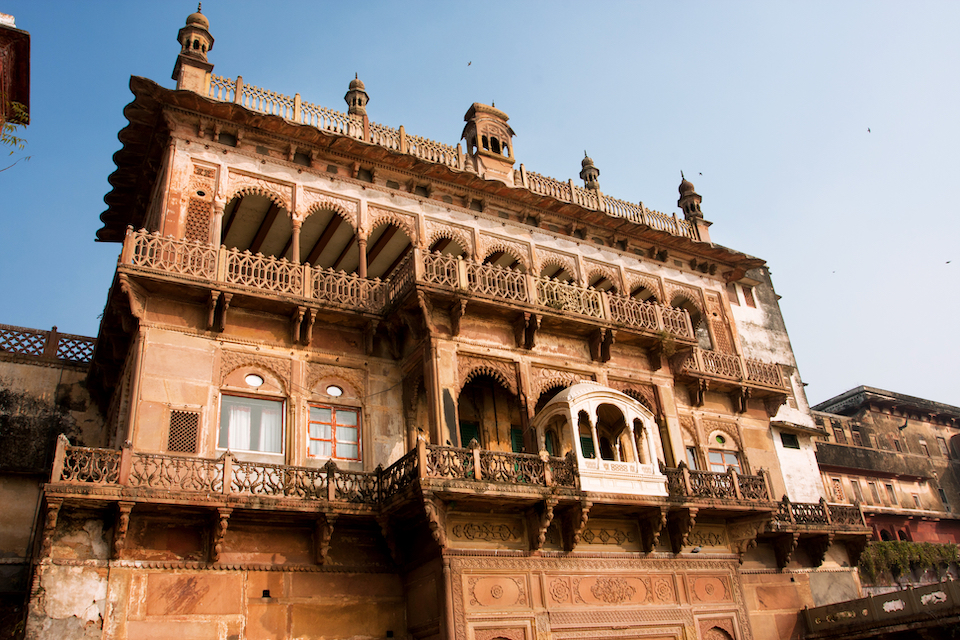
Once stepping inside, you will see a large courtyard surrounded by walls with unique domes, balconies, roofs and towers. Moreover, there is also a museum area with a huge collection with many historical artifacts such as weapons, antique cars, musical instruments, jewelry, etc. In particular, you can go to this fortress on October to experience the Dussehra festival, which represents the victory of good over evil.
New Vishwanath Temple
The new Shri Vishwanath Temple was built in 1960, which is a simulation of the Shri Kashi Vishwanath temple located right in the middle of the campus of Banaras Hindu University. This temple is dedicated to Lord Shiva. This is a place where you can admire interesting statues and artworks and enjoy a moment of peace and relaxation in the green garden surrounding the temple.
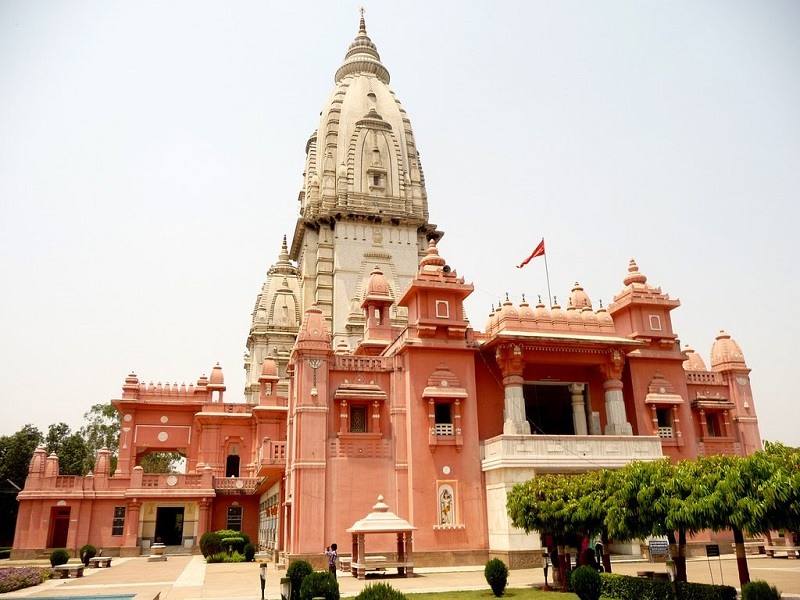
Unlike other temples, Vishwanath is always open to all visitors regardless of their religion. When coming to this temple, you will see the balconies, dome roofs and pyramids designed very nicely, the sculptures of animals are extremely lively. When you go upstairs you can see a statue of Shiva in a marble room. You can go to Vishwanath temple at any time because it is open daily and there is no entrance fee, however visitors will not be able to bring cameras inside the temple.
Durga Temple
Address: C14/160-36-A, Naipokhari, Chetganj, Varanasi, Uttar Pradesh 221001, India
This is one of the very famous sacred temples in Varanasi, known for its striking red color of religious symbols. Coming to this temple, you will be mixed with pilgrims and watch them make offerings at temples, experience vibrant Hindu festivals and ancient rituals. This temple worships the god Durga, the embodiment of female personality. However, indigenous people often call this place Monkey Temple because there are always monkeys running around in and around the temple grounds.
Behind Durga temple is Durga Kund pond, where you can admire the unique beauty with a new perspective towards the red painted facade. Only Hindus are allowed inside the temple grounds, but you can stand outside and watch devotees ring bells, pray and make offerings at the god statue. You can also observe the mischievous monkeys running around and should be careful with your belongings because they can steal things when you are not careful.
Sarnath (Garden Park)
- Address: Sarnath Station Rd, Sarnath, Varanasi, Uttar Pradesh, 221007. It is 13 km northeast of Varanasi center.
- Entrance Fee: The entrance fee to Sarnath Archaeological Museum for foreigners is 5 rupees. Other monuments charge a fee of 250 rupees.
- Opening hours: 9AM to 5PM weekdays. However, the Sarnath Archaeological Museum is closed on Fridays.
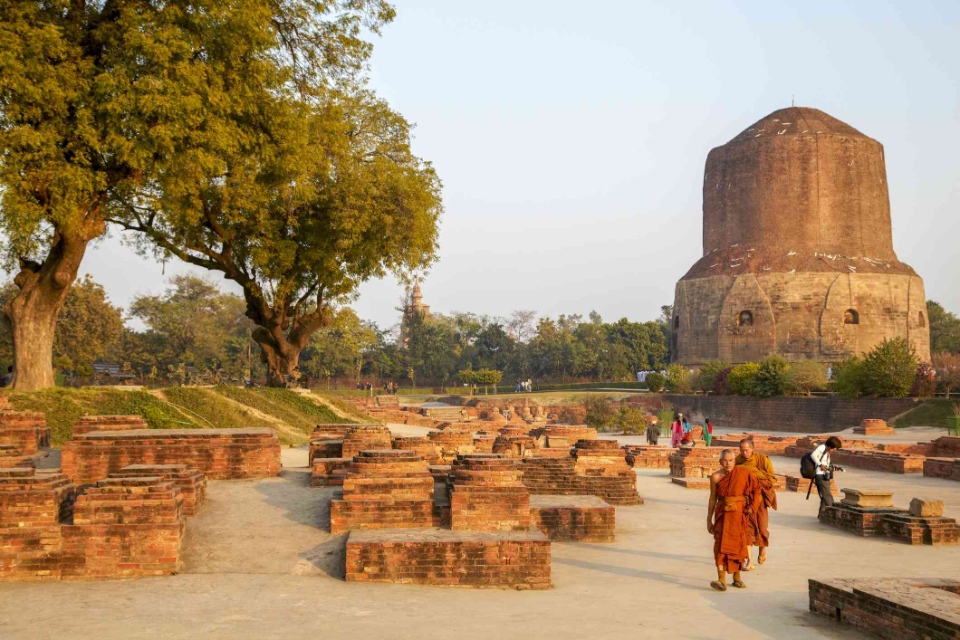
One of the four relics associated with the life of Buddha Shakyamuni (four Buddhist Holy And Sacred Places). This is the place where the Buddha taught the Dharma for the first time and also the place where the first group of bhikkhus was established after the five brothers Kaundinya became enlightened.
Relic of the Deer Park, where the Buddha preached the Dharma for the first time
today, most of the ancient buildings and structures in Sarnath have been damaged or destroyed:
- The majestic Dhamek Stupa with a height of 39 m and a width of 28 m.
- Dharmarajika Stupa was built by King Ashoka. In the 18th century, most of the stupa was demolished for construction materials, so now only the foundation remains.
- Chaukhandi Stupa is where the Buddha met his disciples for the first time. In recent years, the tower has been restored.
- Ruins of Mulagandha Kuti (old) vihara (Mulagandha Kuti Vihar), where the Buddha resided during the rainy season.
- Mulagandha Kuti Vihara (new) was built in 1930 with beautiful murals. Behind the vihara is a deer garden.
- The Ashoka Pillar and the Sarnath Archeological Museum. In addition, there is a Bodhi tree branched from the tree in Bodhgaya.
What and where to eat?
Food in Varanasi is quite cheap: egg rolls: 10 rupees/piece, 15 rupees/two pieces; plain dosa: 10 rupees/piece; masala dosa cake: 15 rupees/piece; ice cream: 5 rupees/stick; lassi: 7 – 15 rupees/cup. However, according to my observations, the food sold along the riverbank is usually more expensive than the food in the main street.
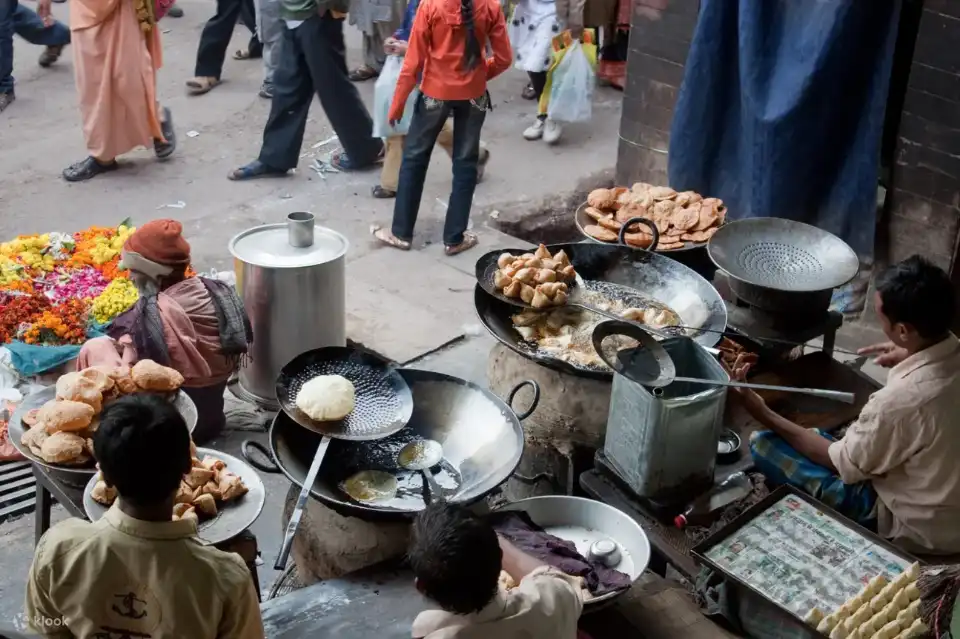
These restaurants are highly rated by travelers:
- Lotus Lounge: Address: D14/27 Mansarowar Ghat, Varanasi. The food is good and safe, there are nice seats overlooking the river and the ghats.
- Shiva Café and German Bakery: Address: D26/4 Narad Ghat, Himalaya Lodge, Raja Ghat, Varanasi. The menu here is very rich, from European, Indian, Nepali to Thai and even Chinese dishes. A meal for two costs about 500 rupees.
- Mona Lisa Café: Address: Bangali Tola Rd, Pandey Ghat, Bangali Tola, Varanasi. Serving Italian, Indian, Asian dishes, delicious and cheap.
- Baba Lassi: Address: D21/27 Munshi Ghat, Bangali Tola, Varanasi. The lassi at the restaurant is delicious and full. You should taste pomegranate lassi, strawberry lassi, and especially blue lassi, Varanasi’s specialty.
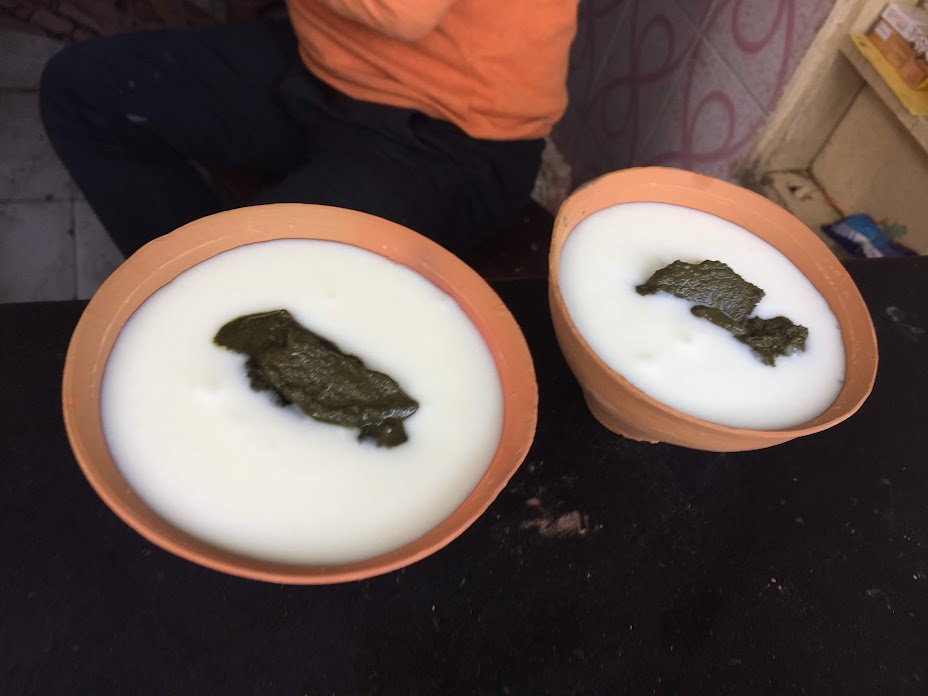
Some useful tips before you go
- The temperature drops at night and early in the morning, so you need to prepare enough warm clothes.
- Like other Indian cities, there are frequent power outages in Varanasi. If you go out in the evening, remember to bring a flashlight. It’s dangerous to rummage in the dark here!
- Every day, many tourists flock to the ghats to pay their respects. Be careful with your belongings in these places.
- Be wary of people claiming to be volunteers. This is actually just a local person impersonating you, guiding you around to ask for a tip.
- In the ghats, you can easily see images of strangely dressed Hindu hermits (sadhu). If you want to take pictures with them, you may have to pay, usually 10 rupees. However, a true sadhu never asks for money outright.
- Absolutely do not take pictures of the cremation scene. Hindus believe that this act disrespects the deceased and hinders them from escaping. If you are caught taking pictures, you may have to pay a lot of money.
- In Varanasi, especially the old town, there are a lot of monkeys. Therefore, if you eat outside, it will be easy to attract their attention and easily be robbed of food.
- According to the Hindu beliefs, cows are sacred animals and Indians do not eat beef. In Varanasi, cows roam freely on the street, obstructing traffic. People here, when encountering cows, also avoid to one side, at most, honking beep beep (!!)
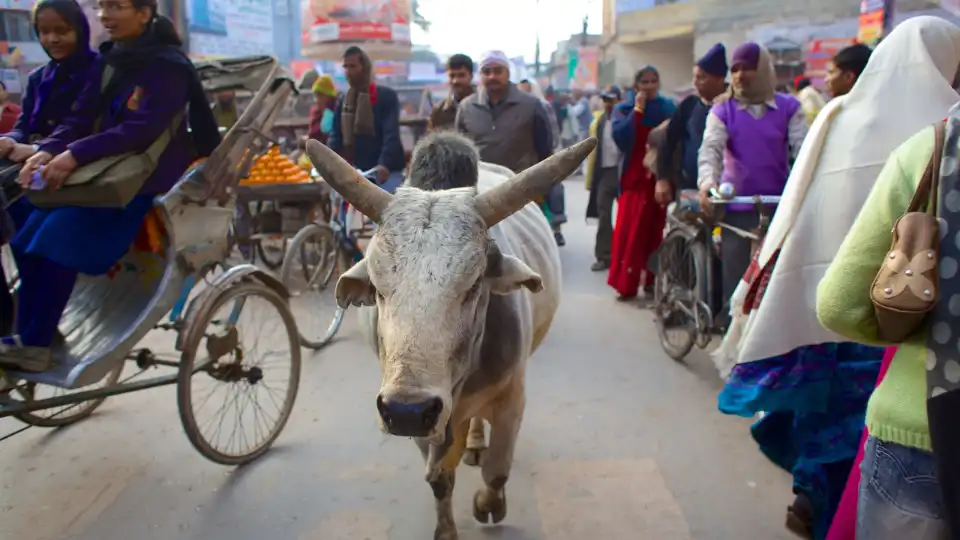

Varanasi left me with a lot of feelings about the safe city, although there are still a few scammers, beggars, fake Naga Sadhu… but they are not too troublesome for me. The river is also clean and clear with no trash like previous rumors that I have heard… Along with Amritsar, Varanasi is one of the destinations that left the most impression on me in terms of culture, spirit and Indian people.
Some best day tours, trips, activities and transfer services, tickets in, from and to Varanasi you can refer to
- Varanasi Private Day Tour
- Varanasi Heritage City Tour
- Varanasi Village Tour
- Street Food Crawl in Varanasi
- 2D1N Varanasi Private Sightseeing Tour
Rear more India guide here.
































